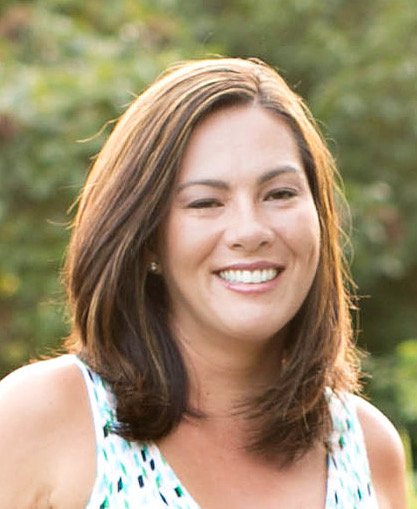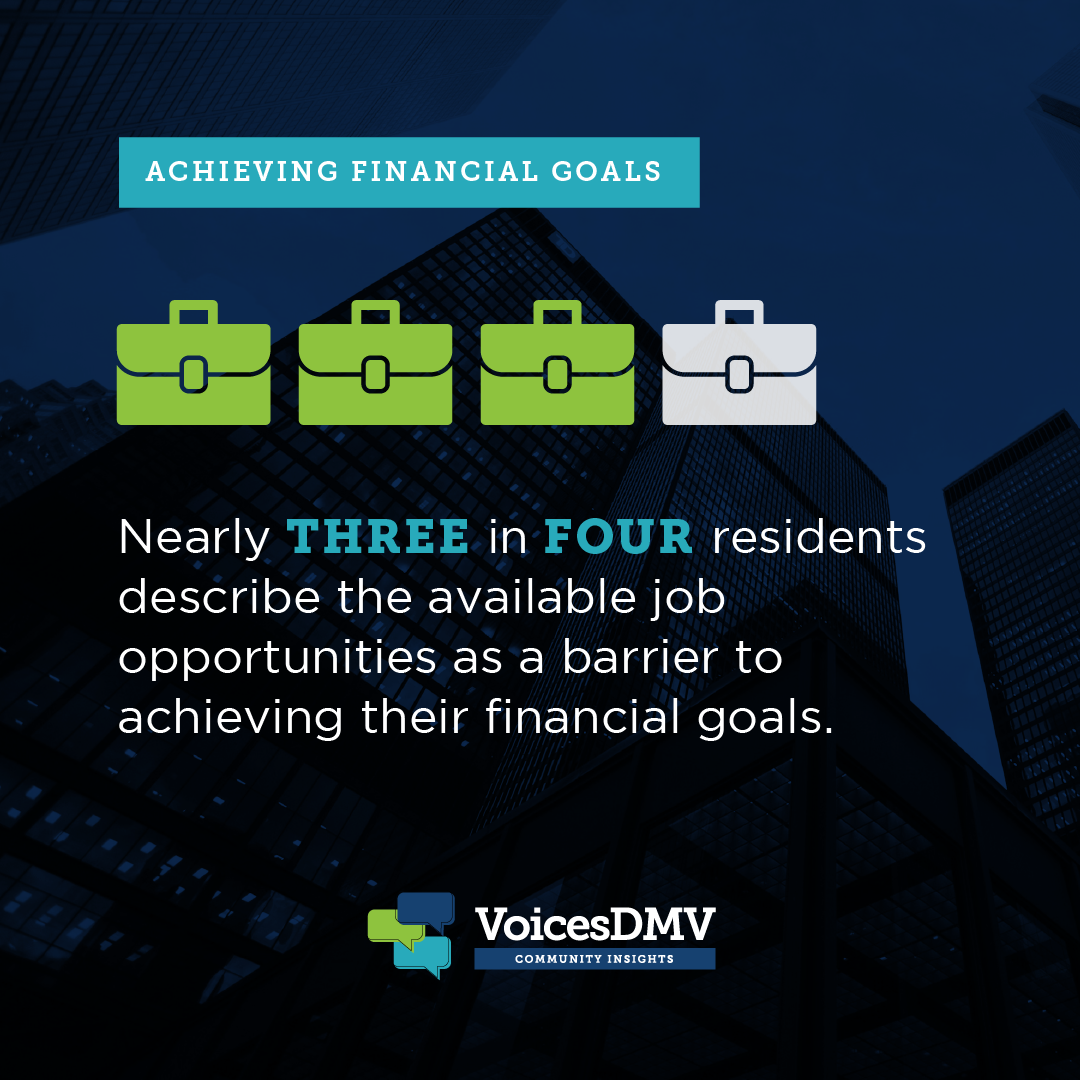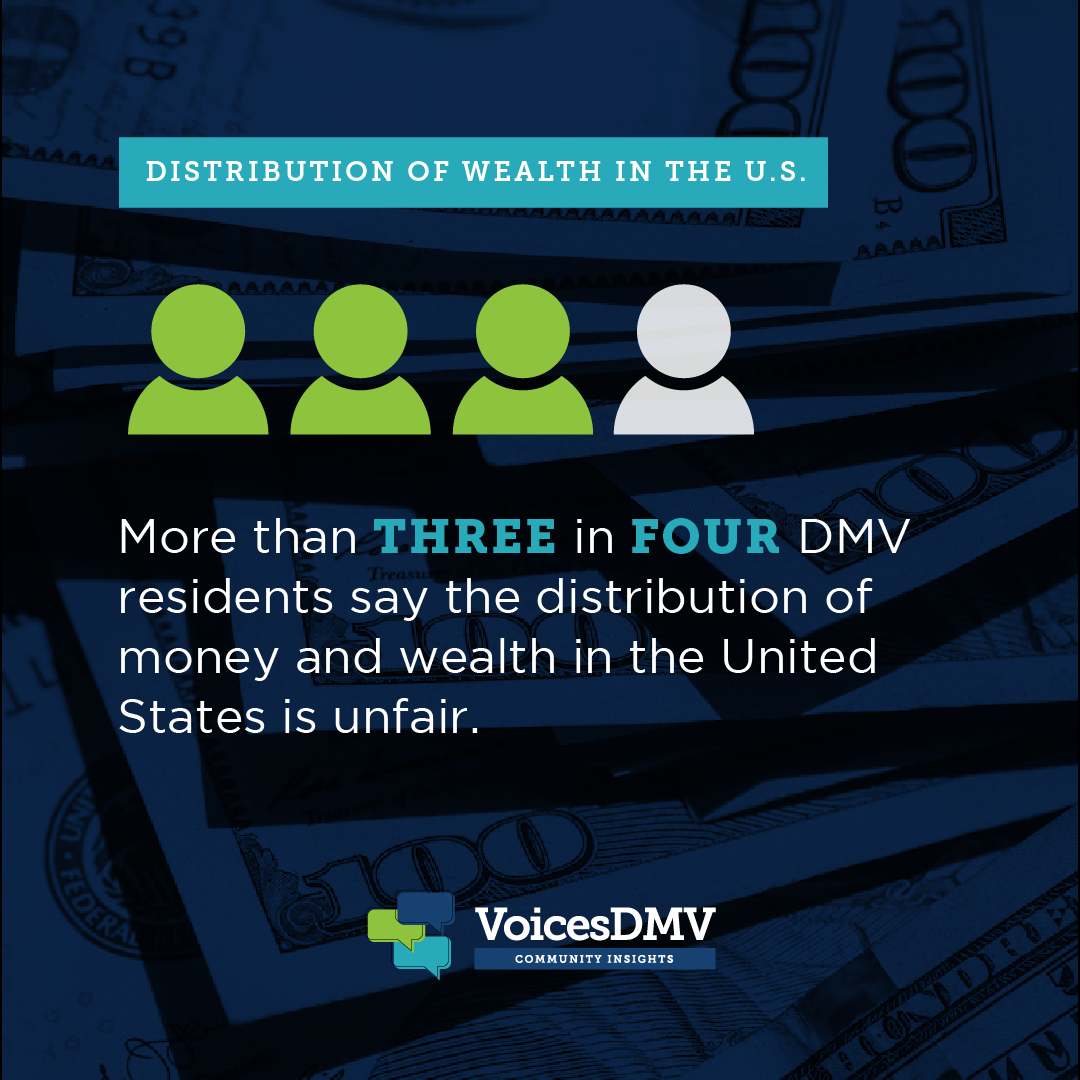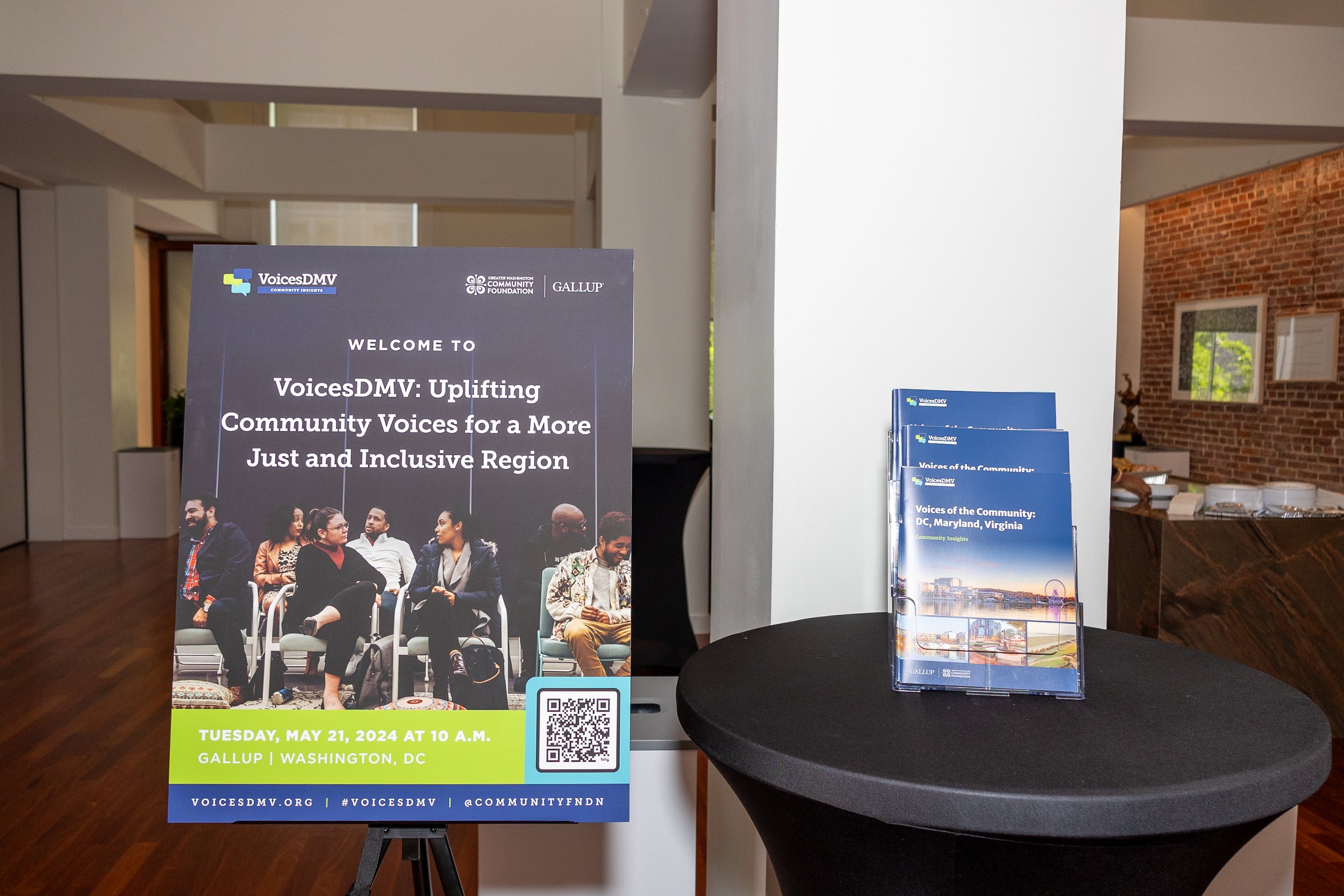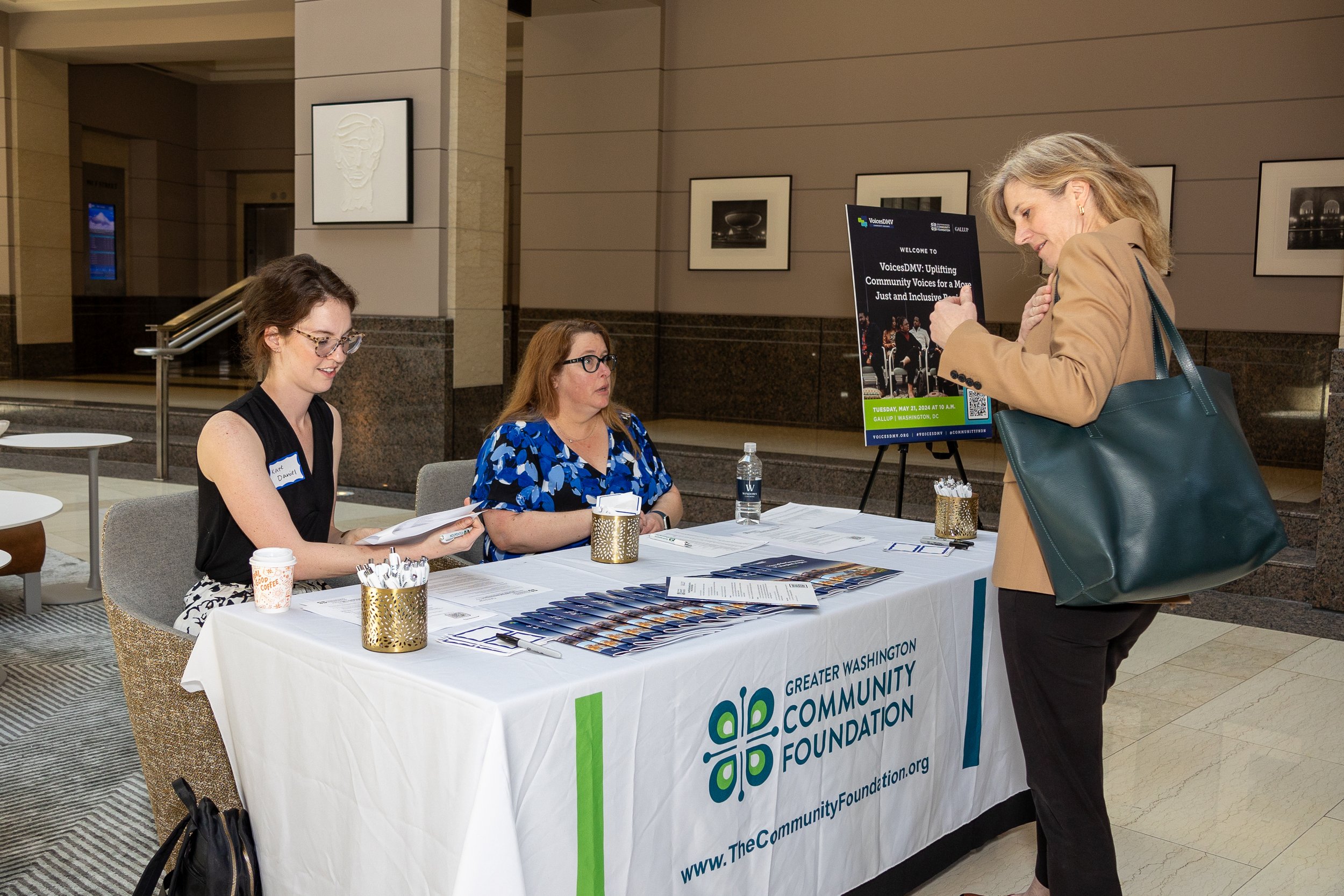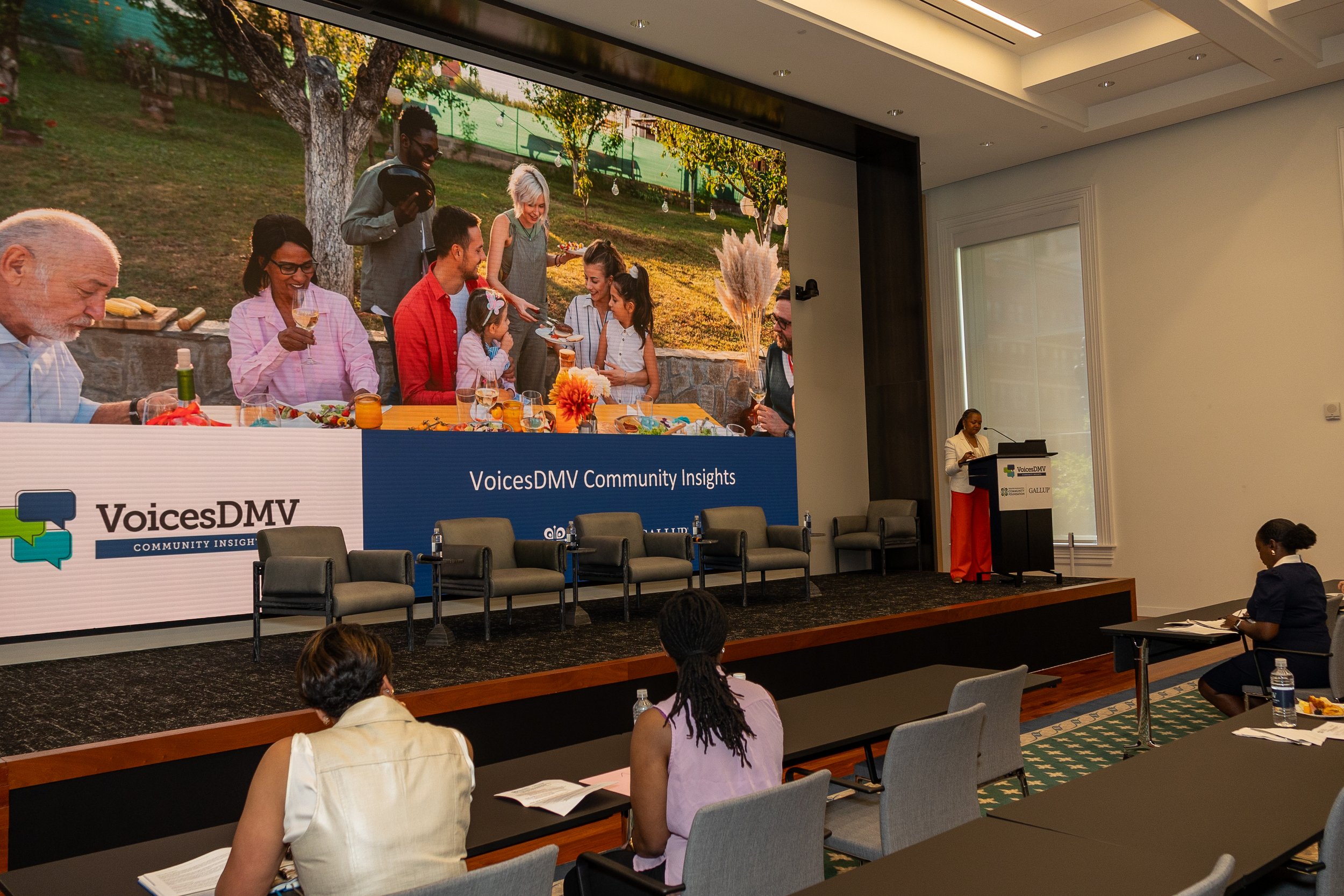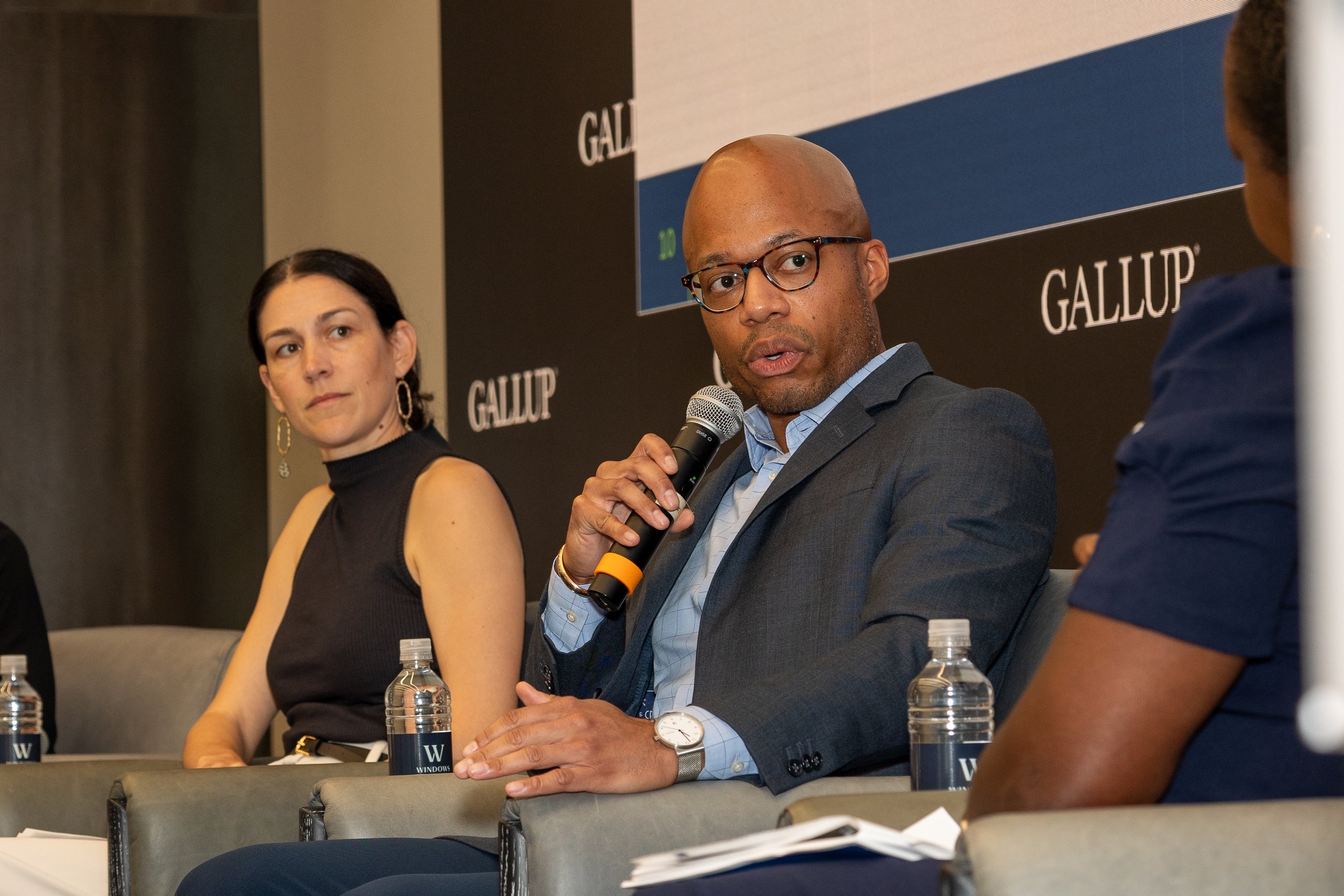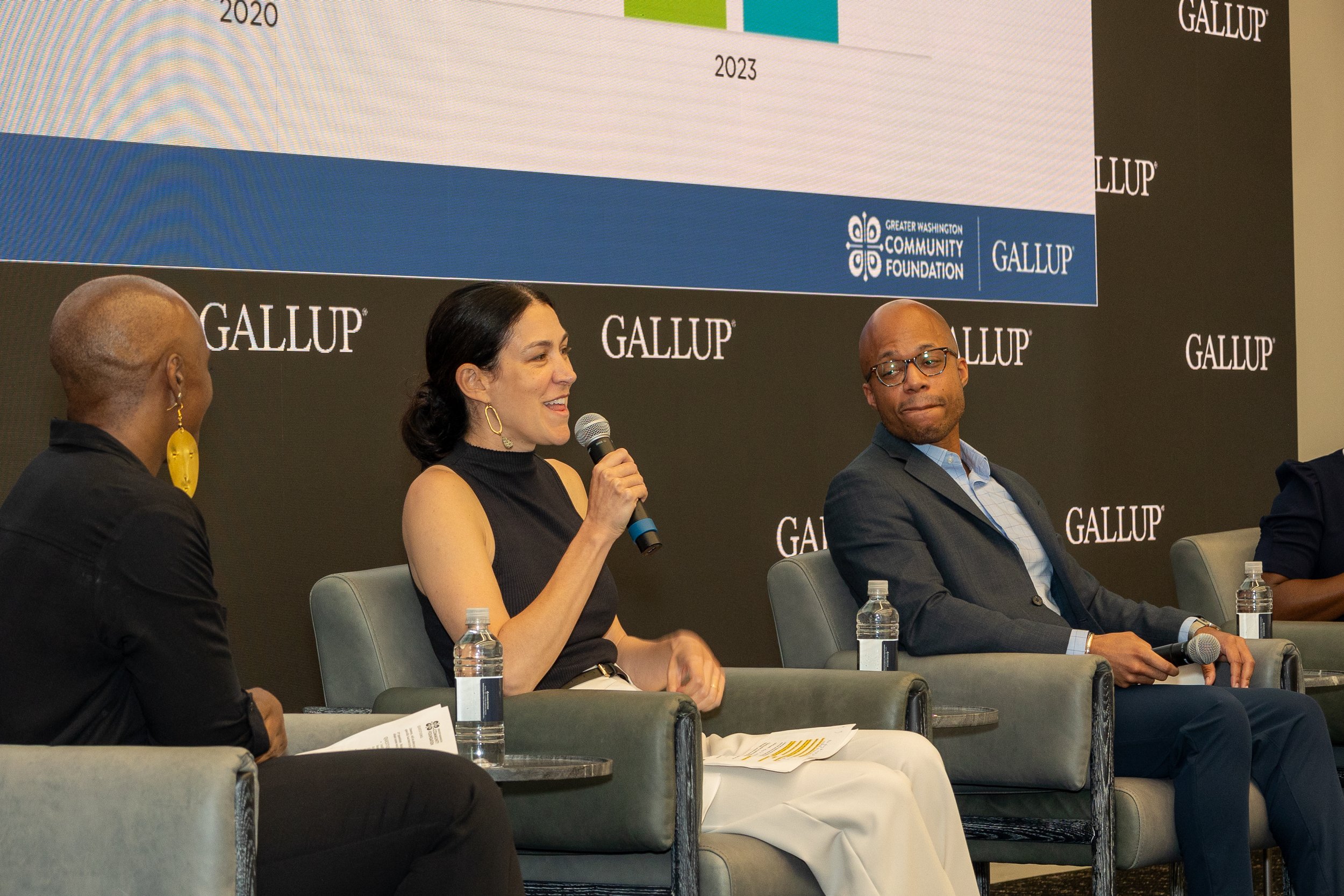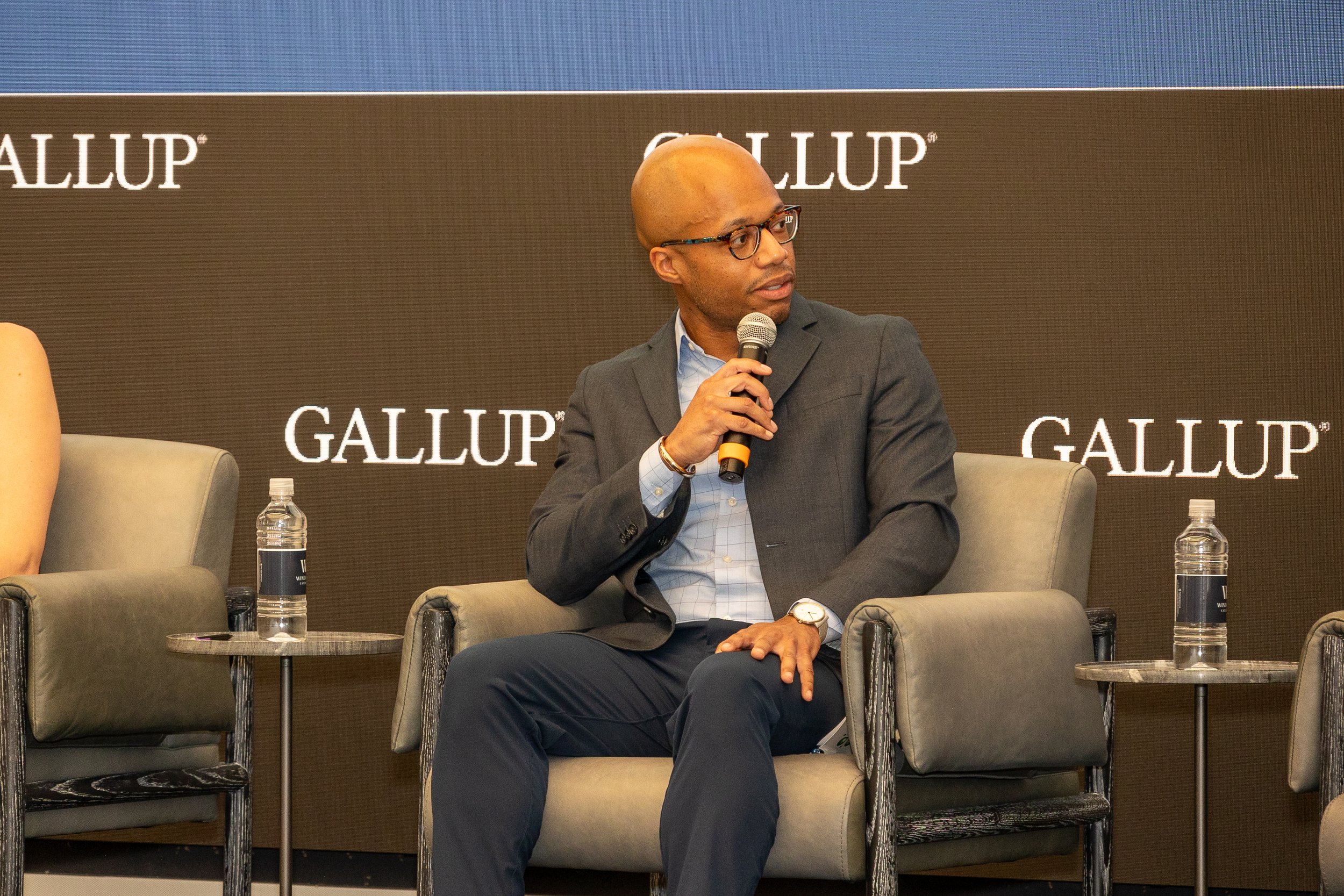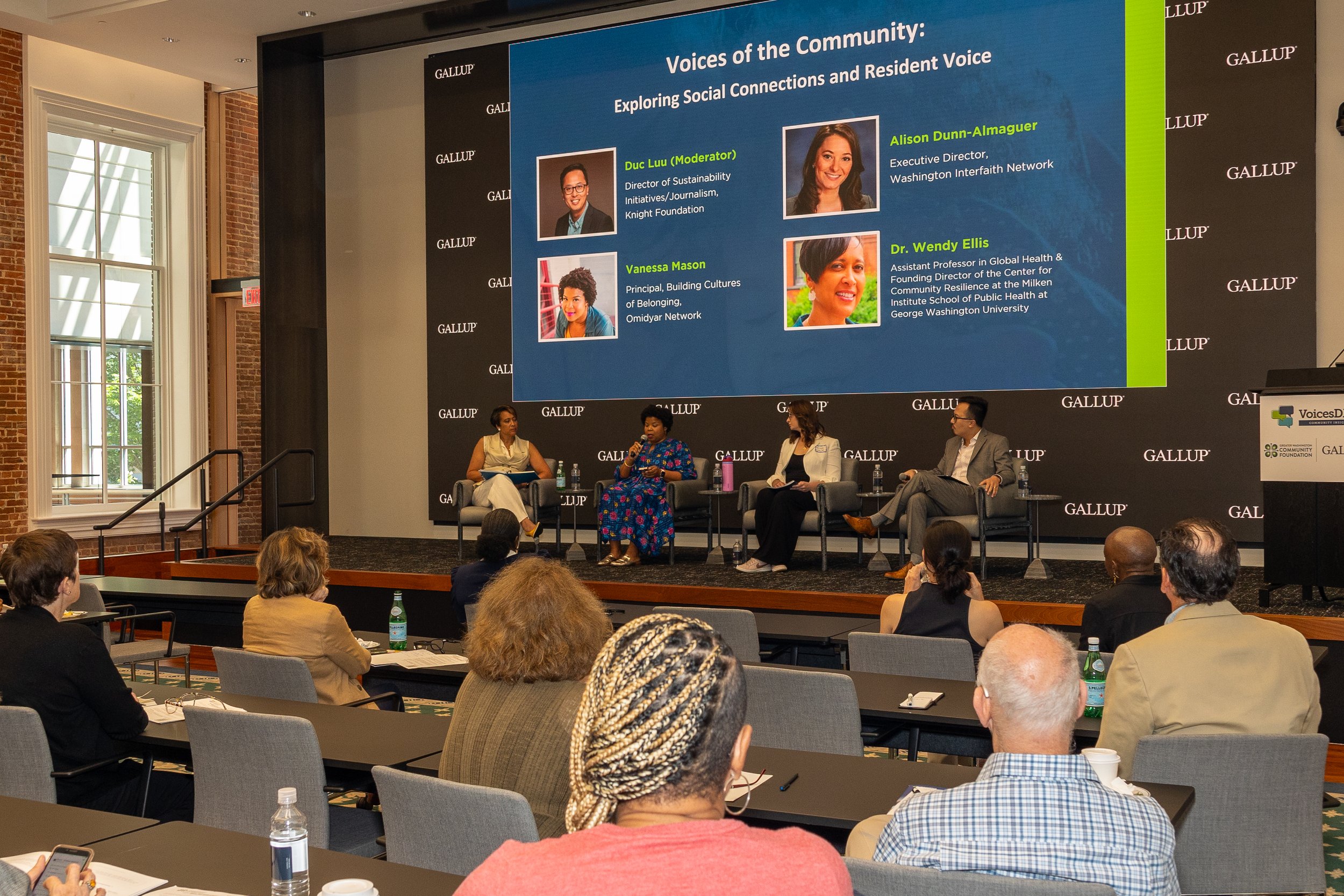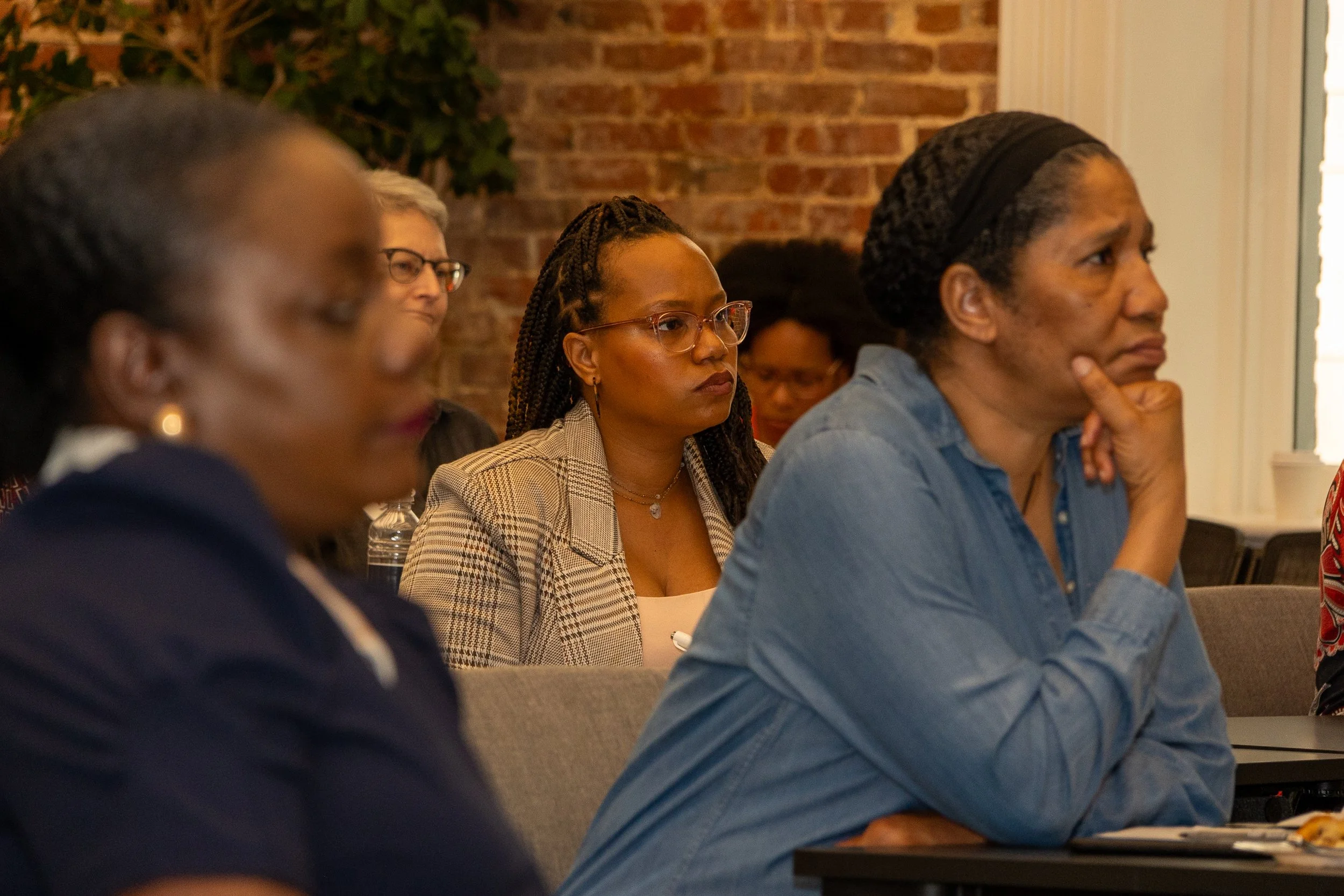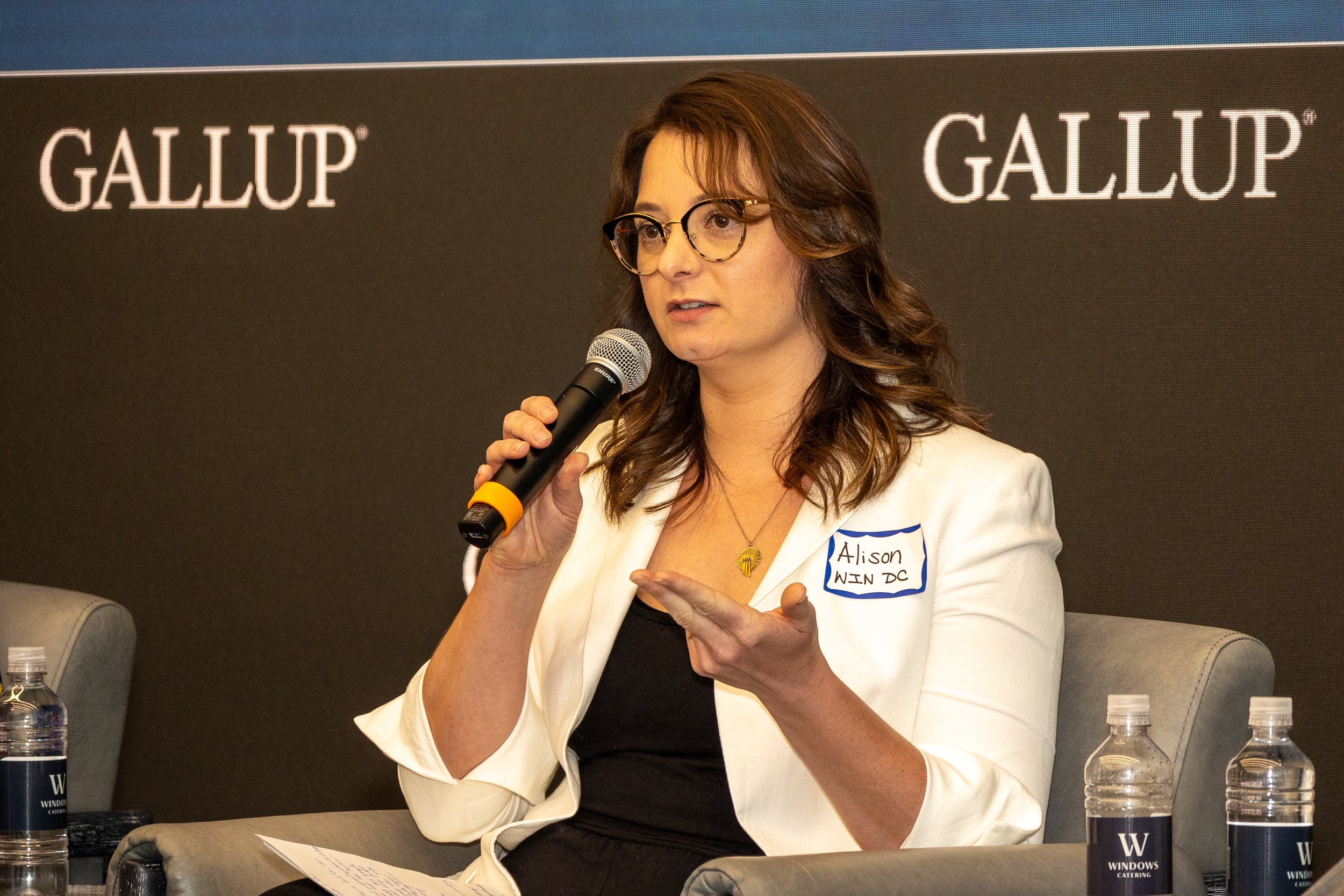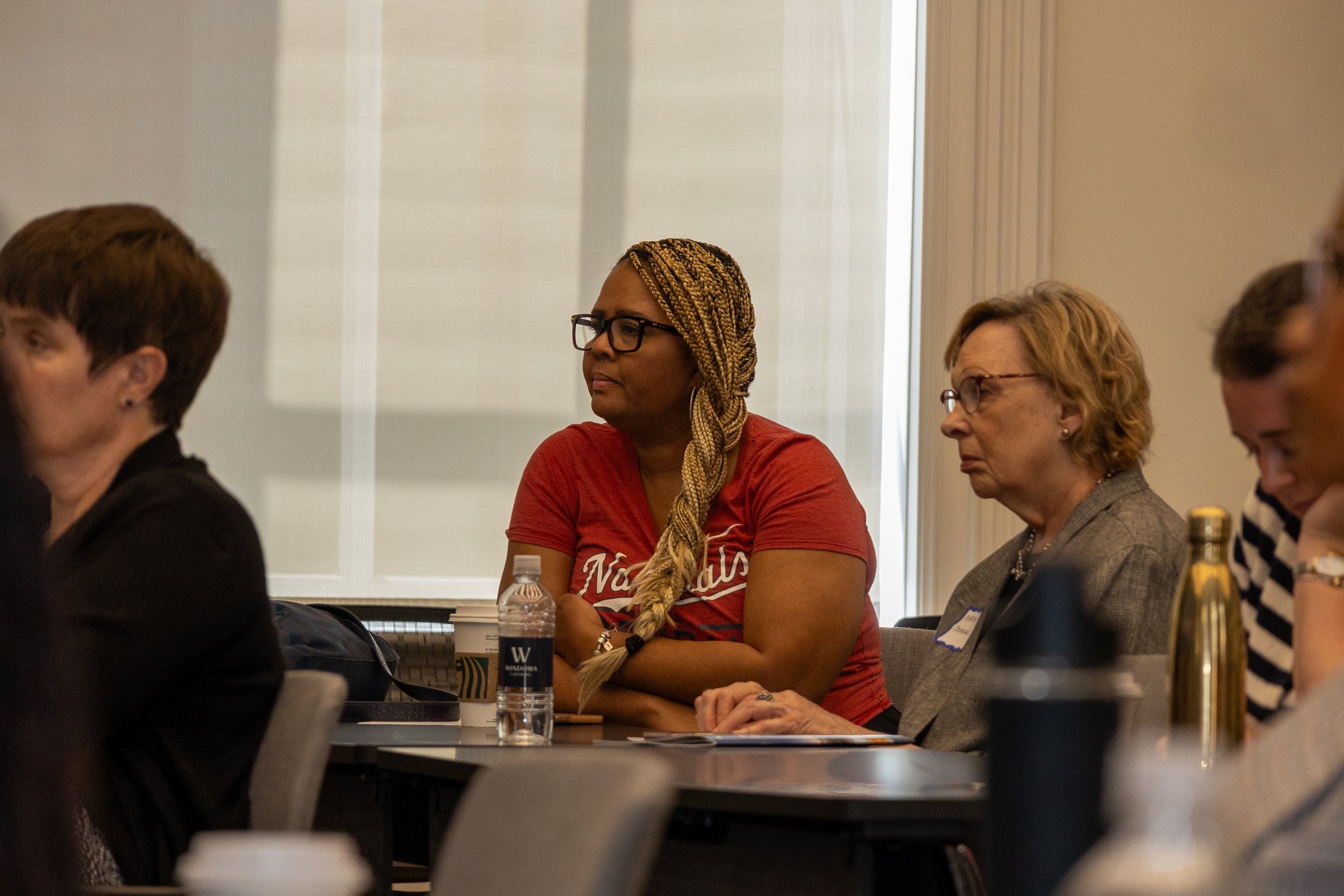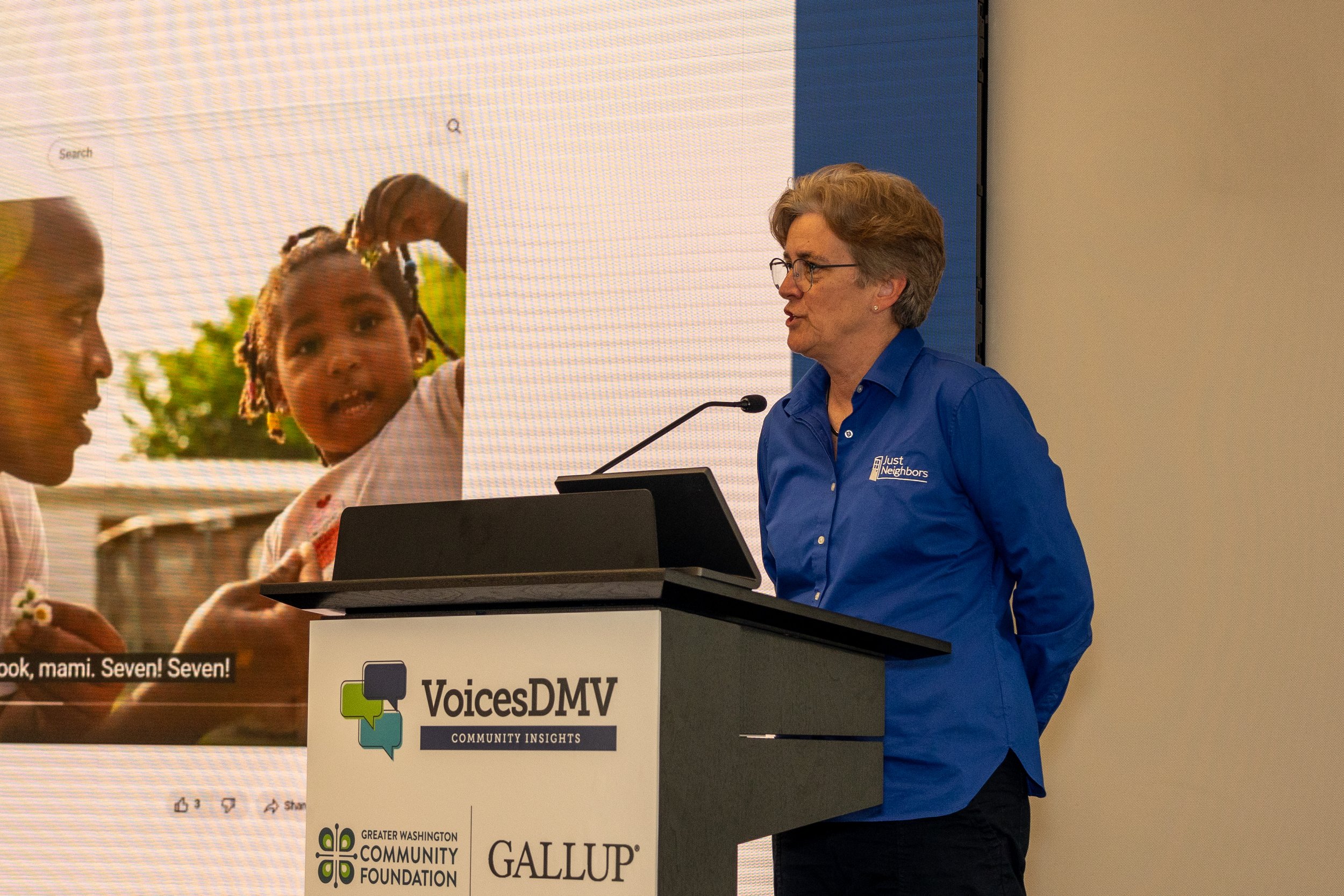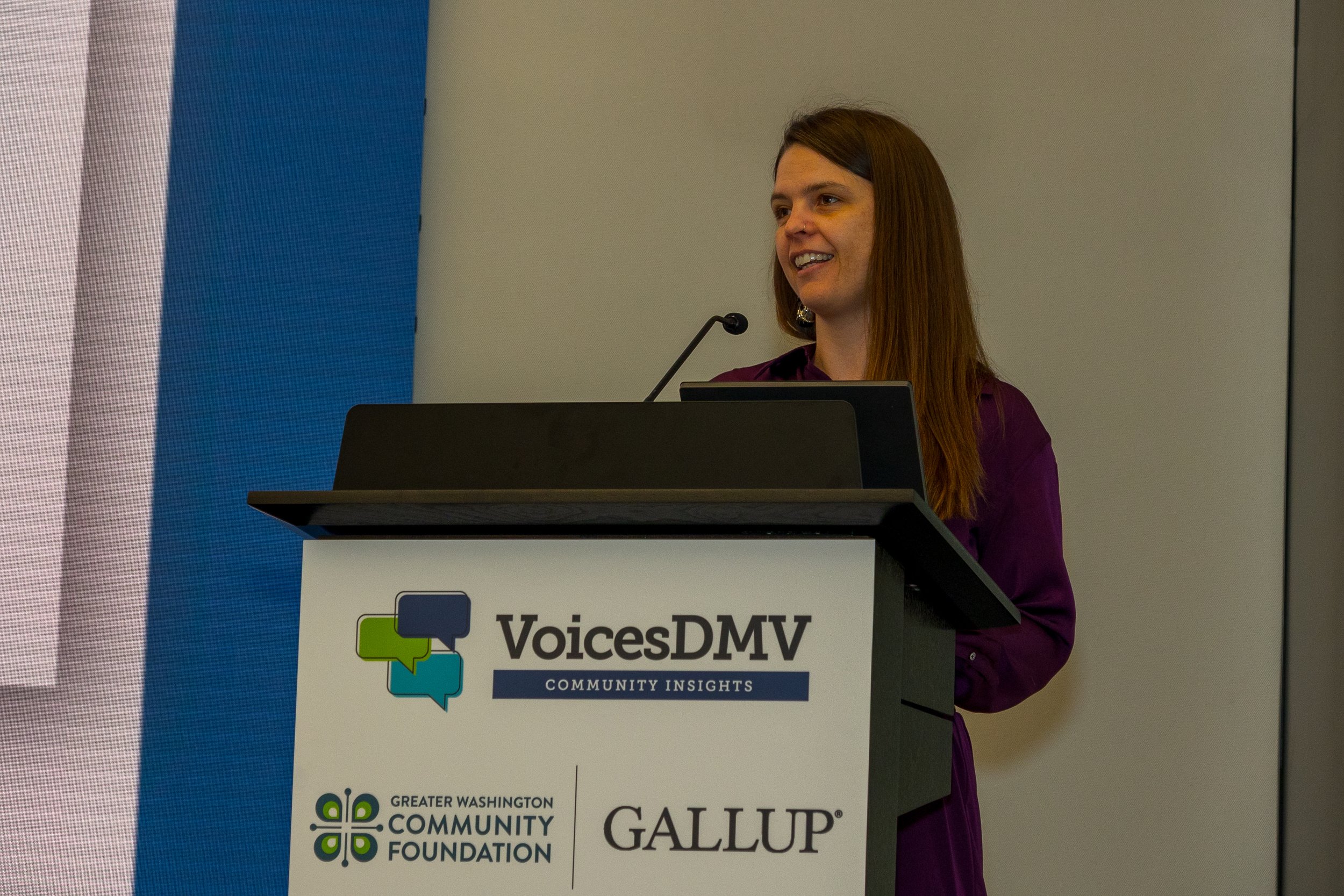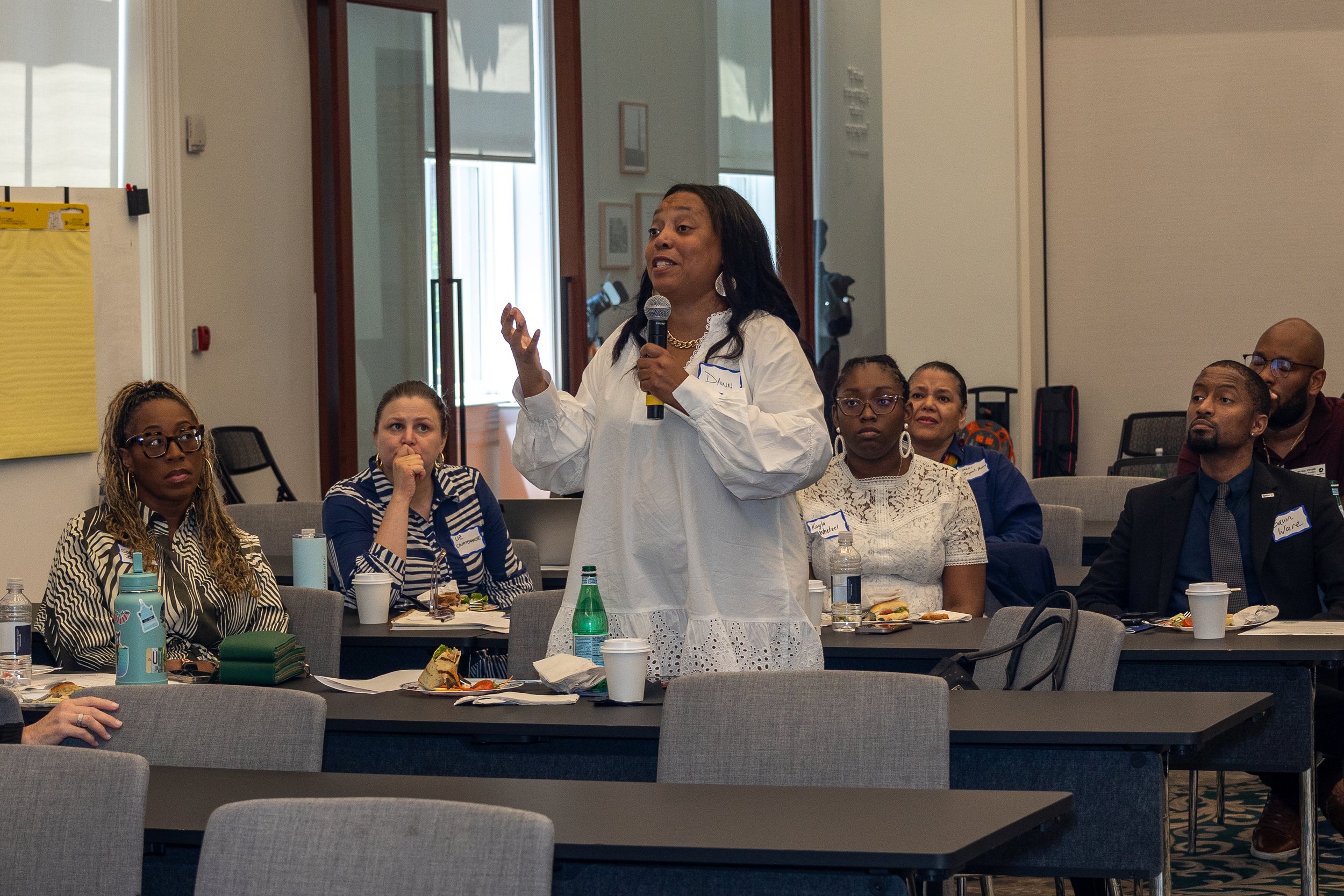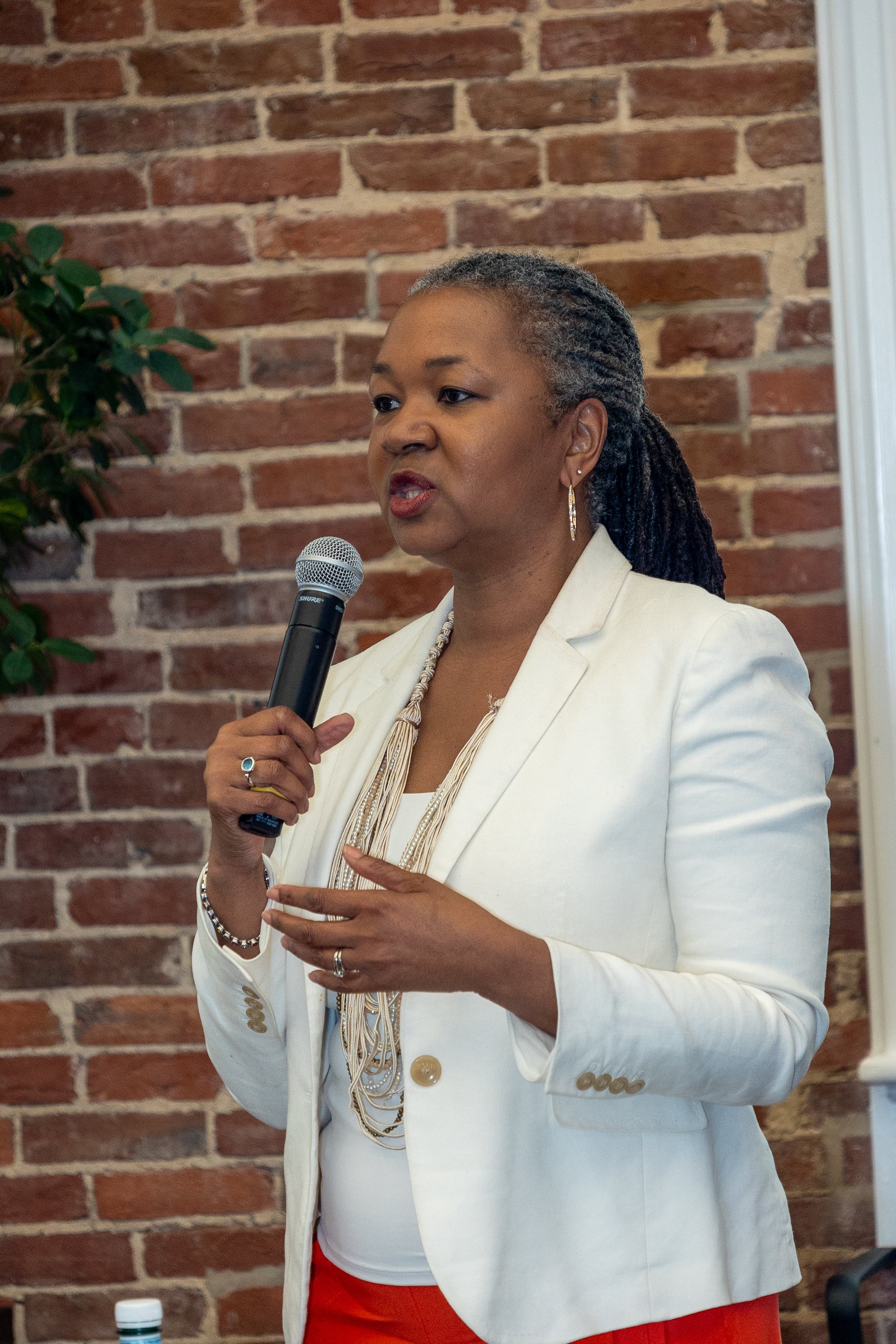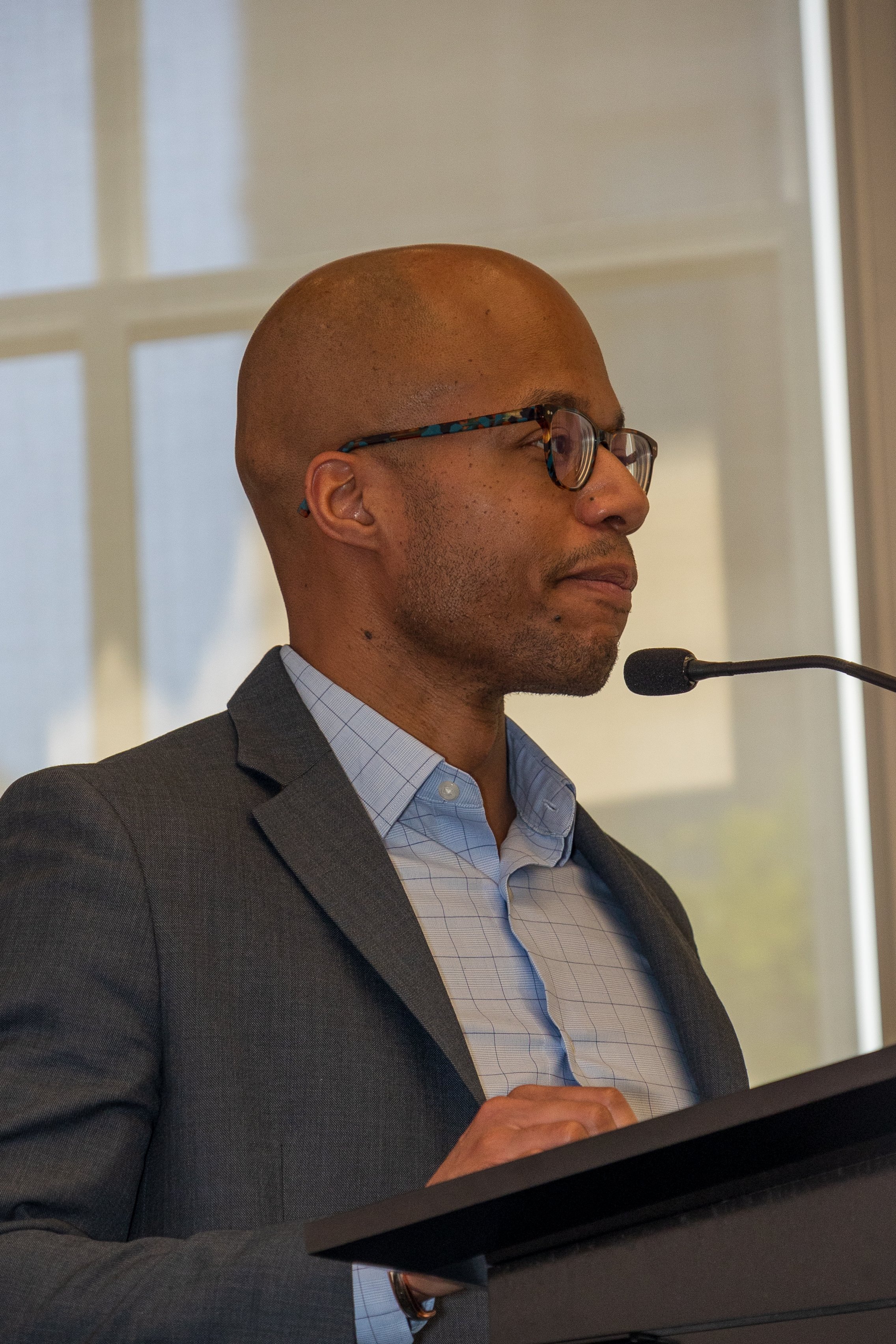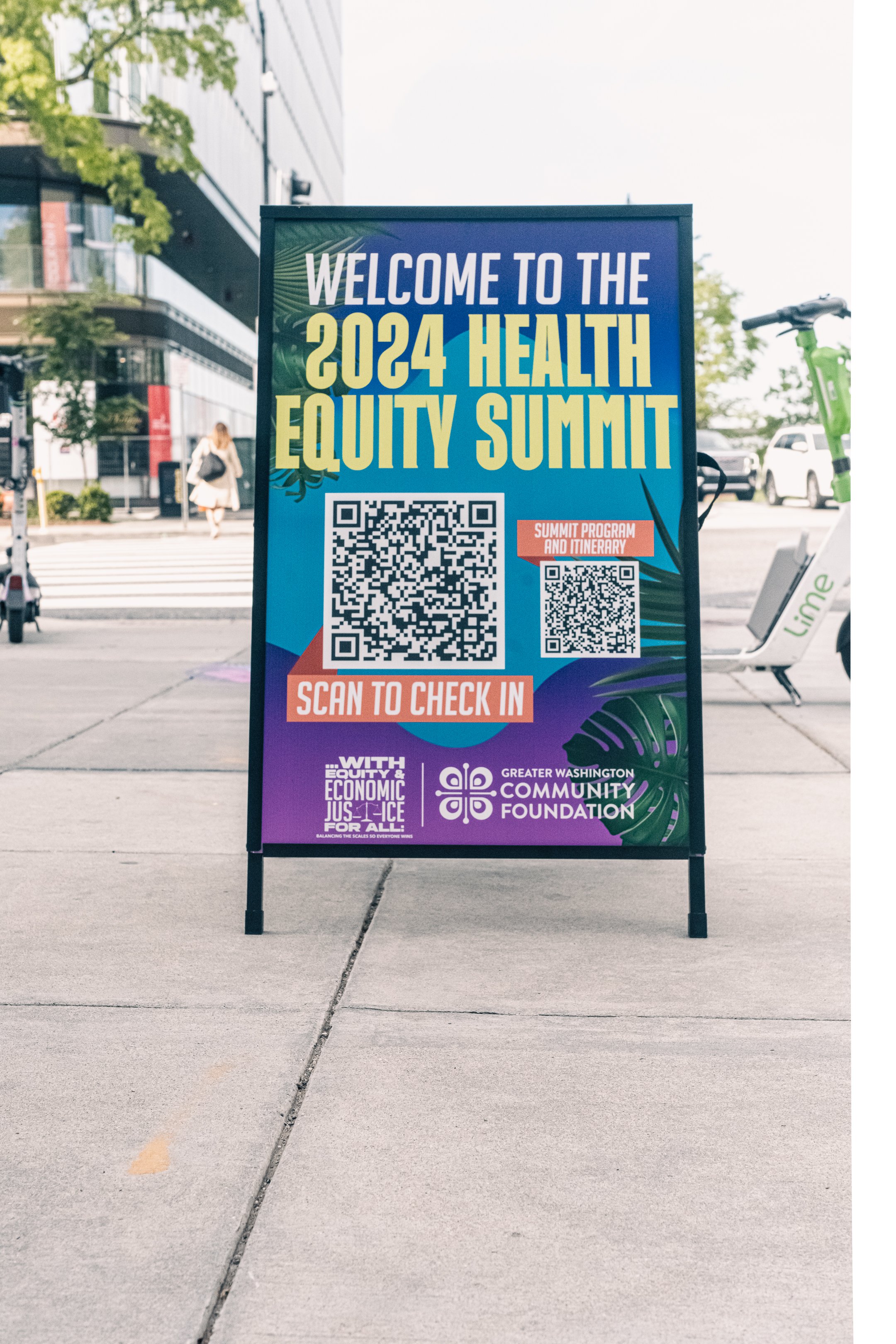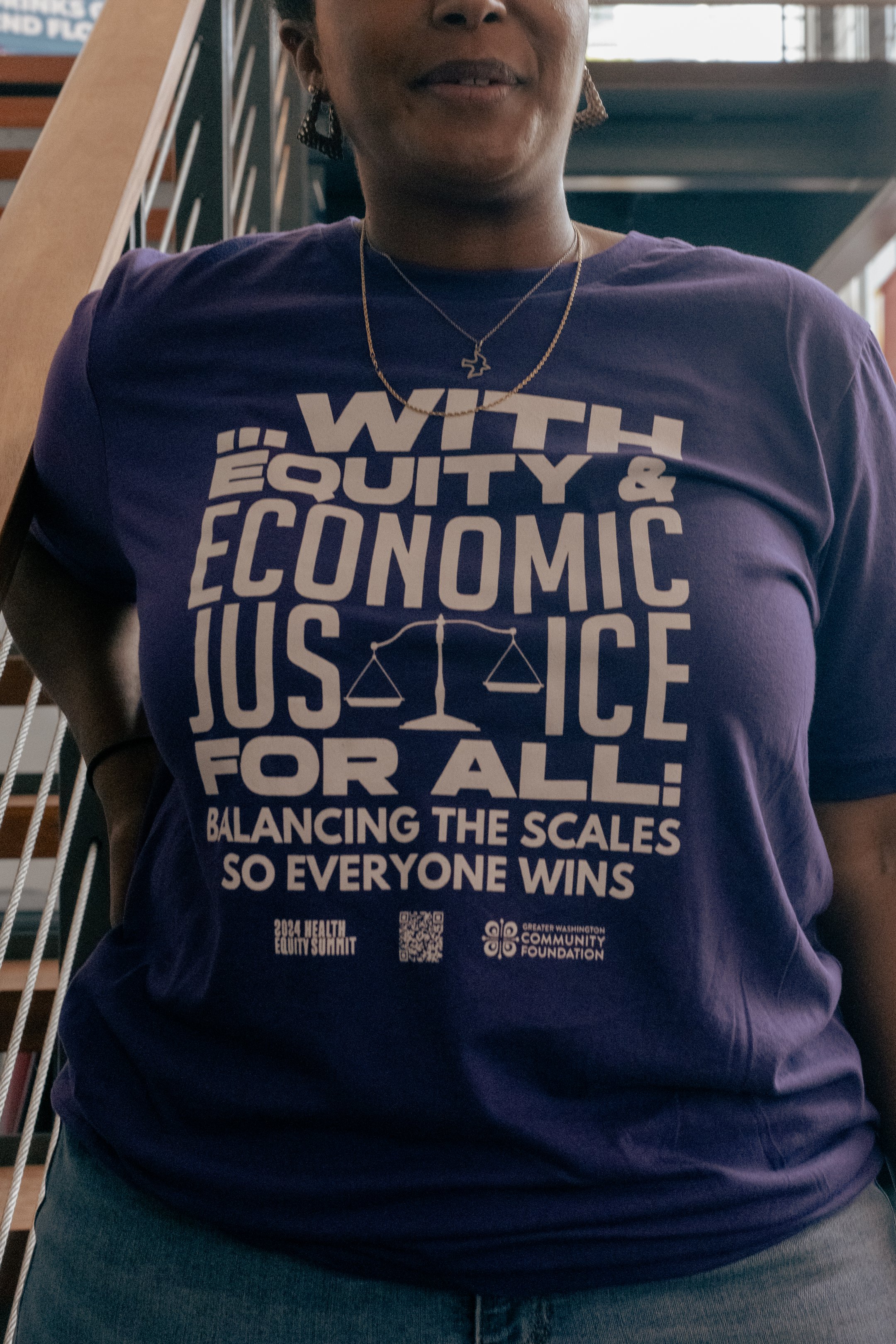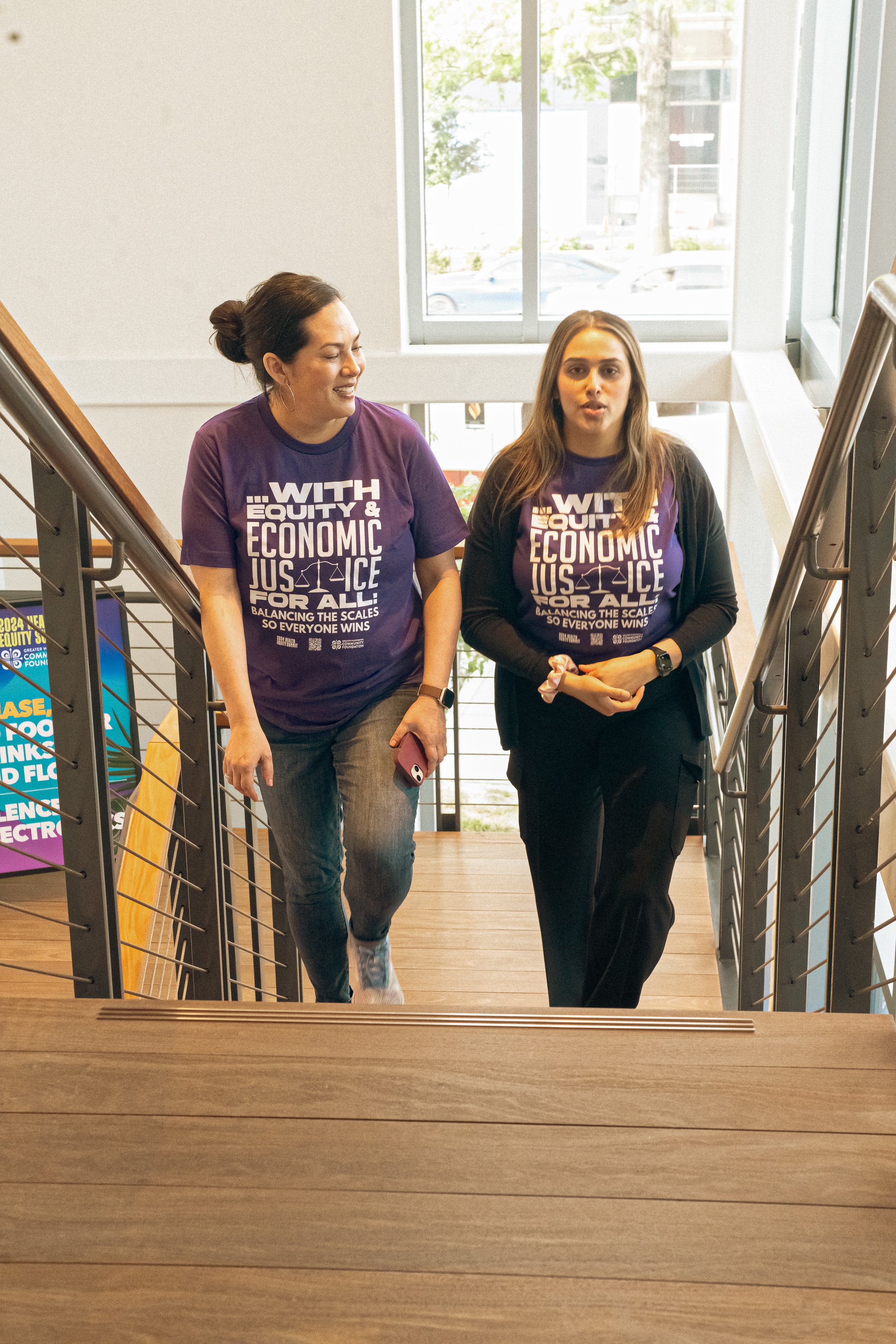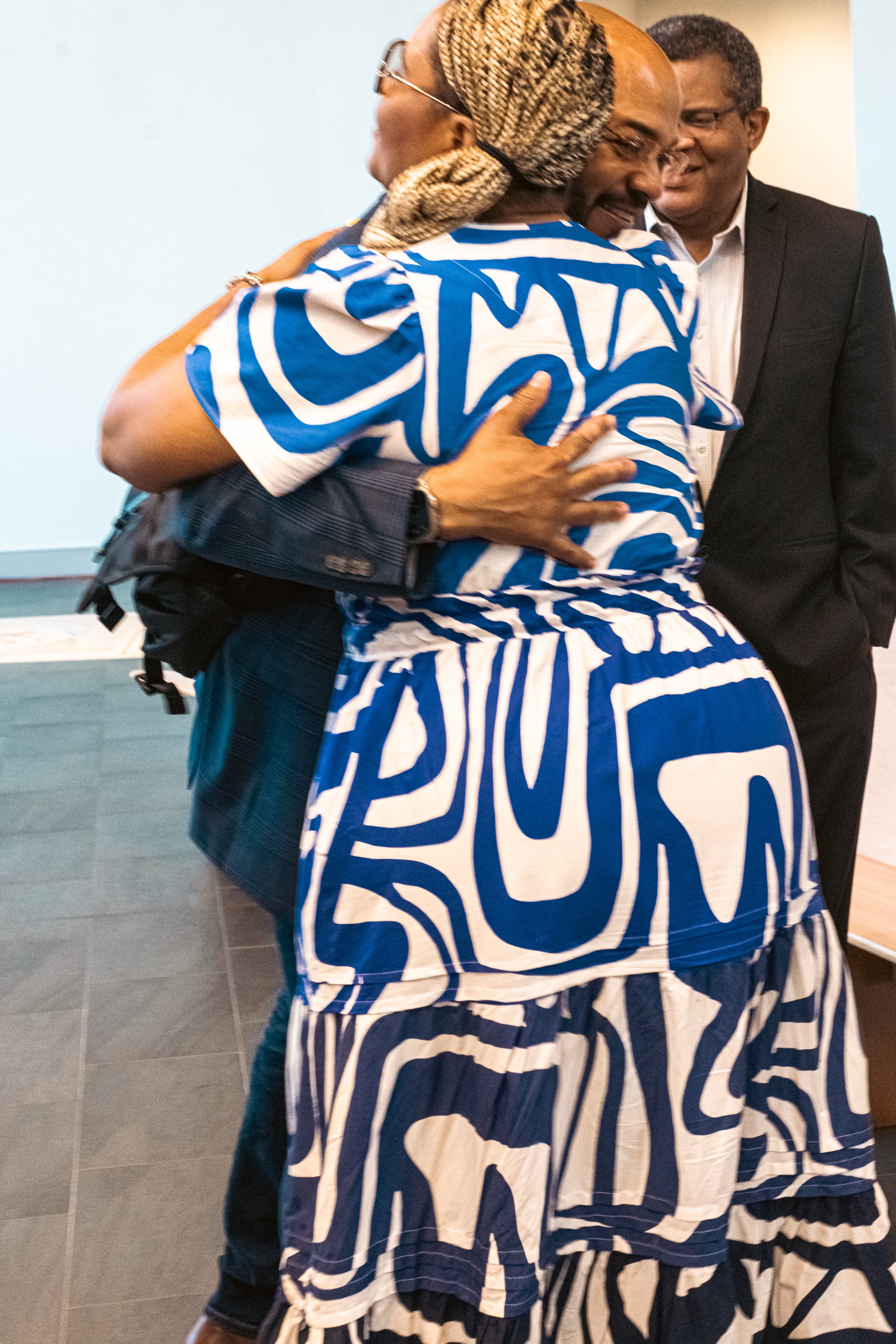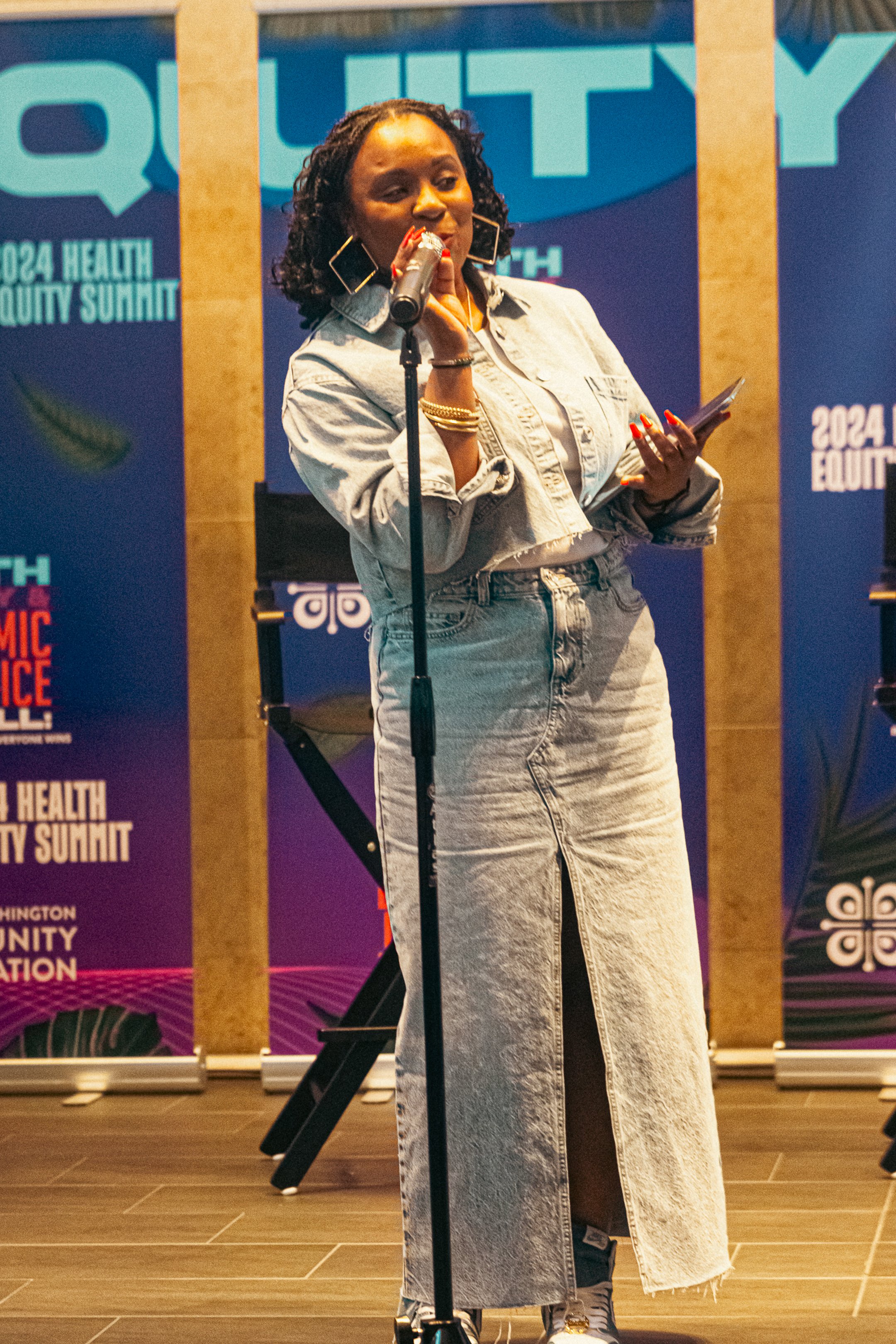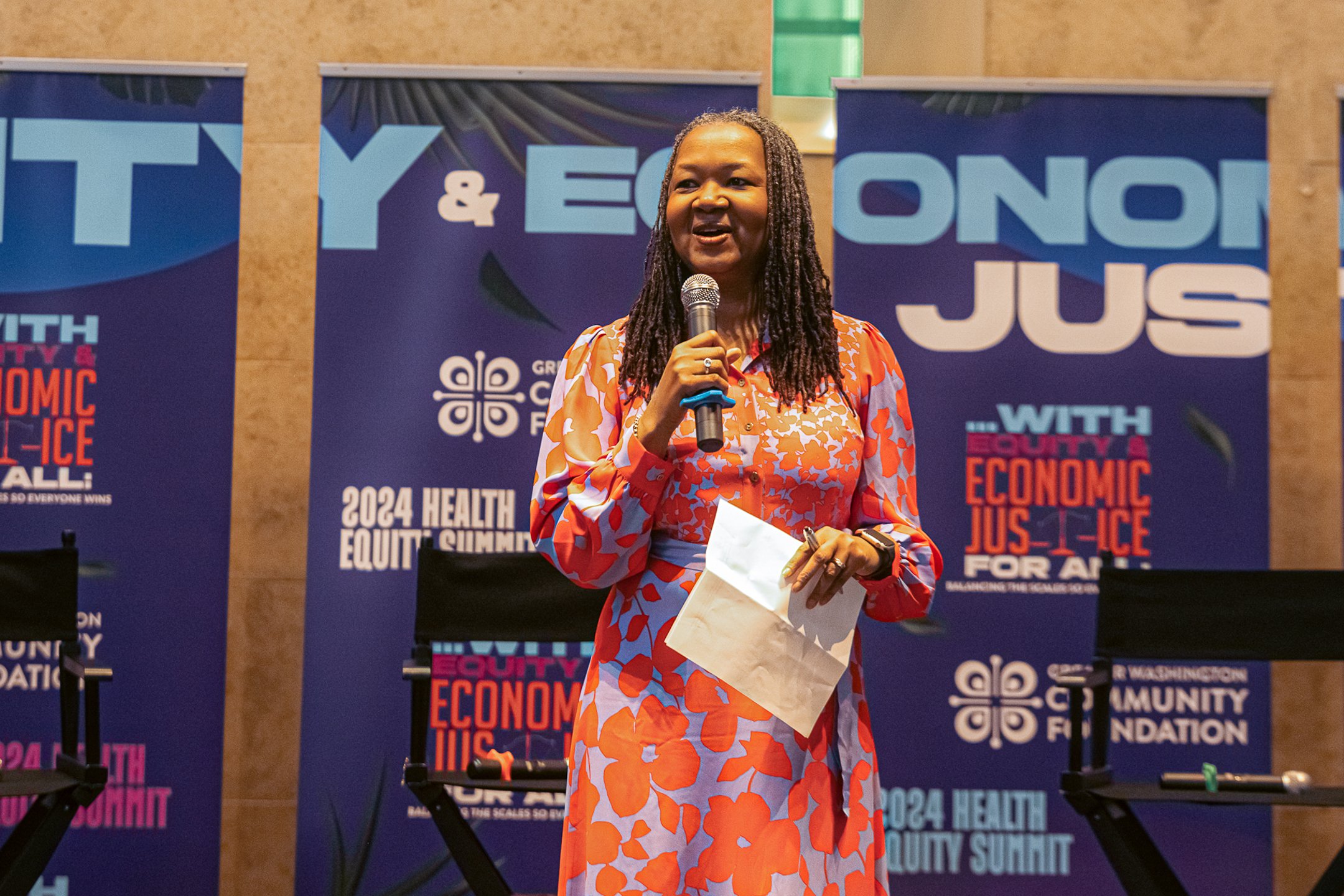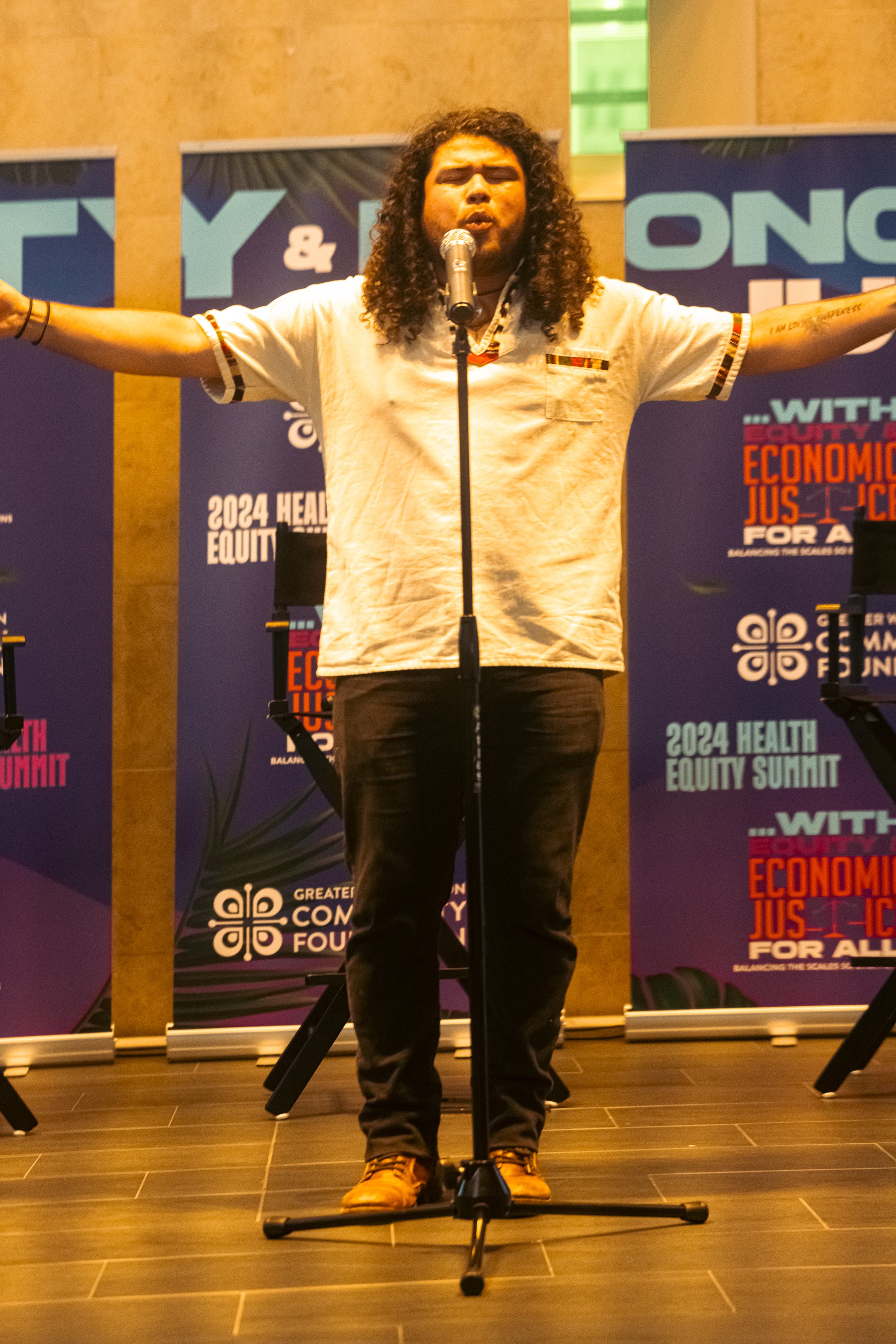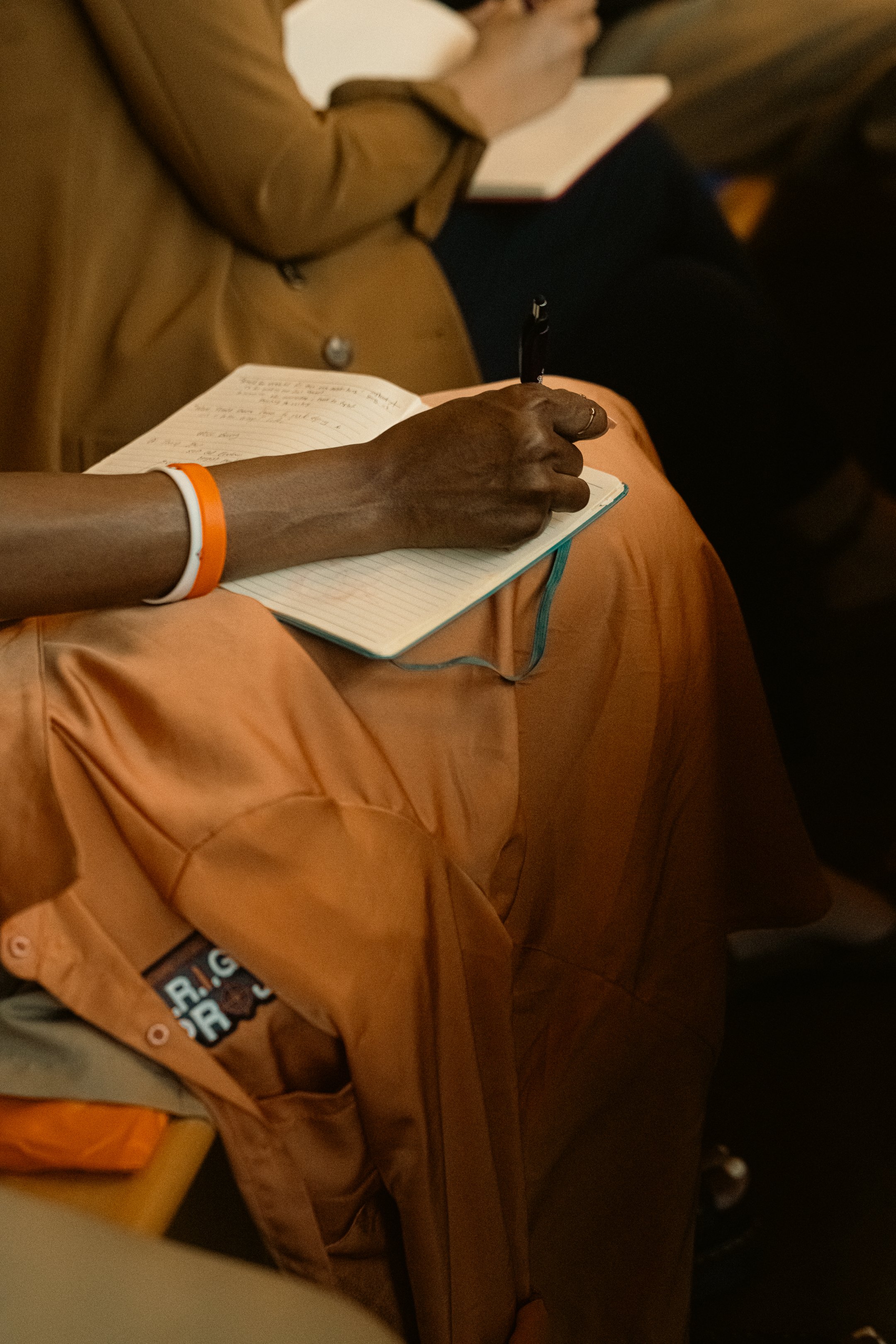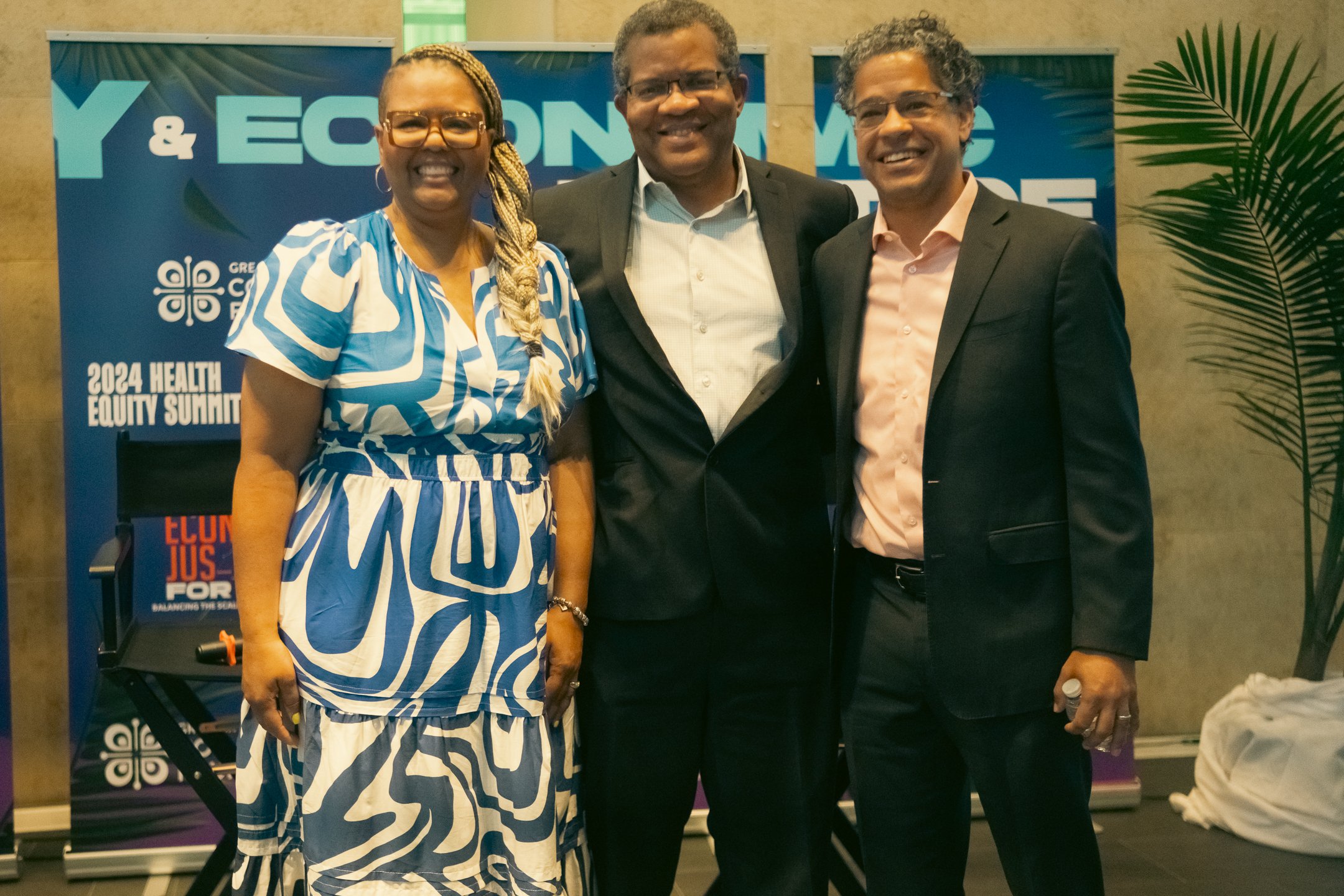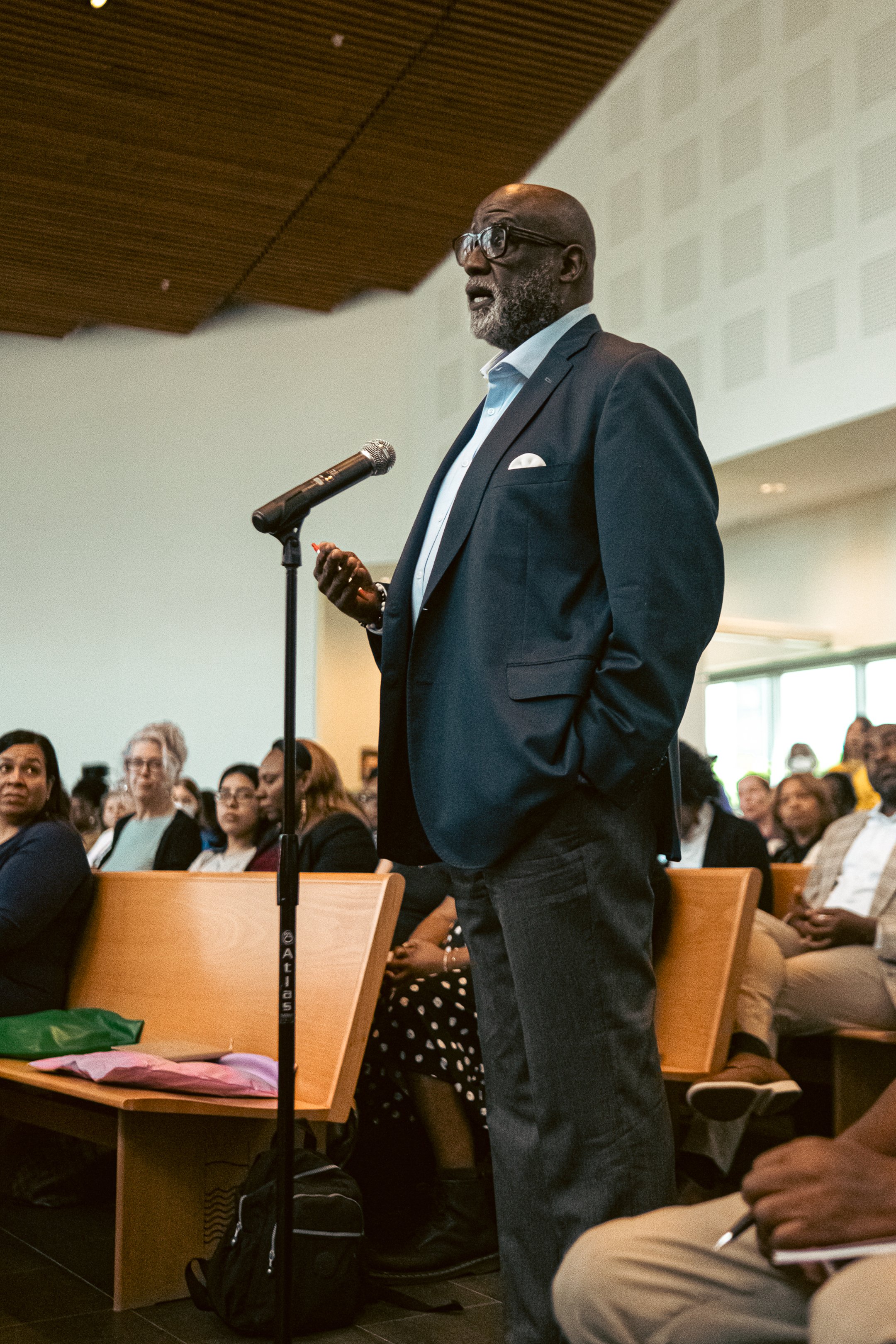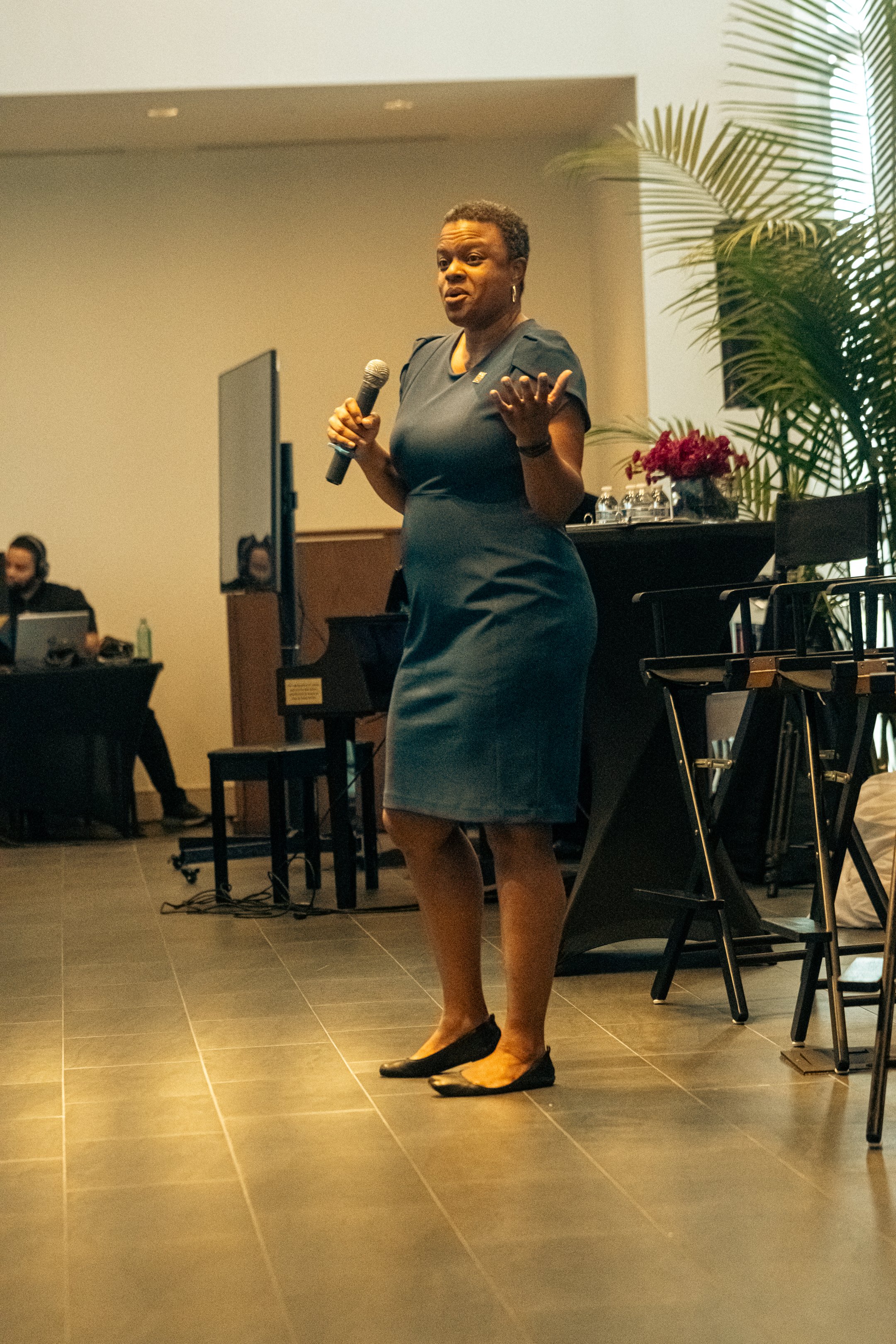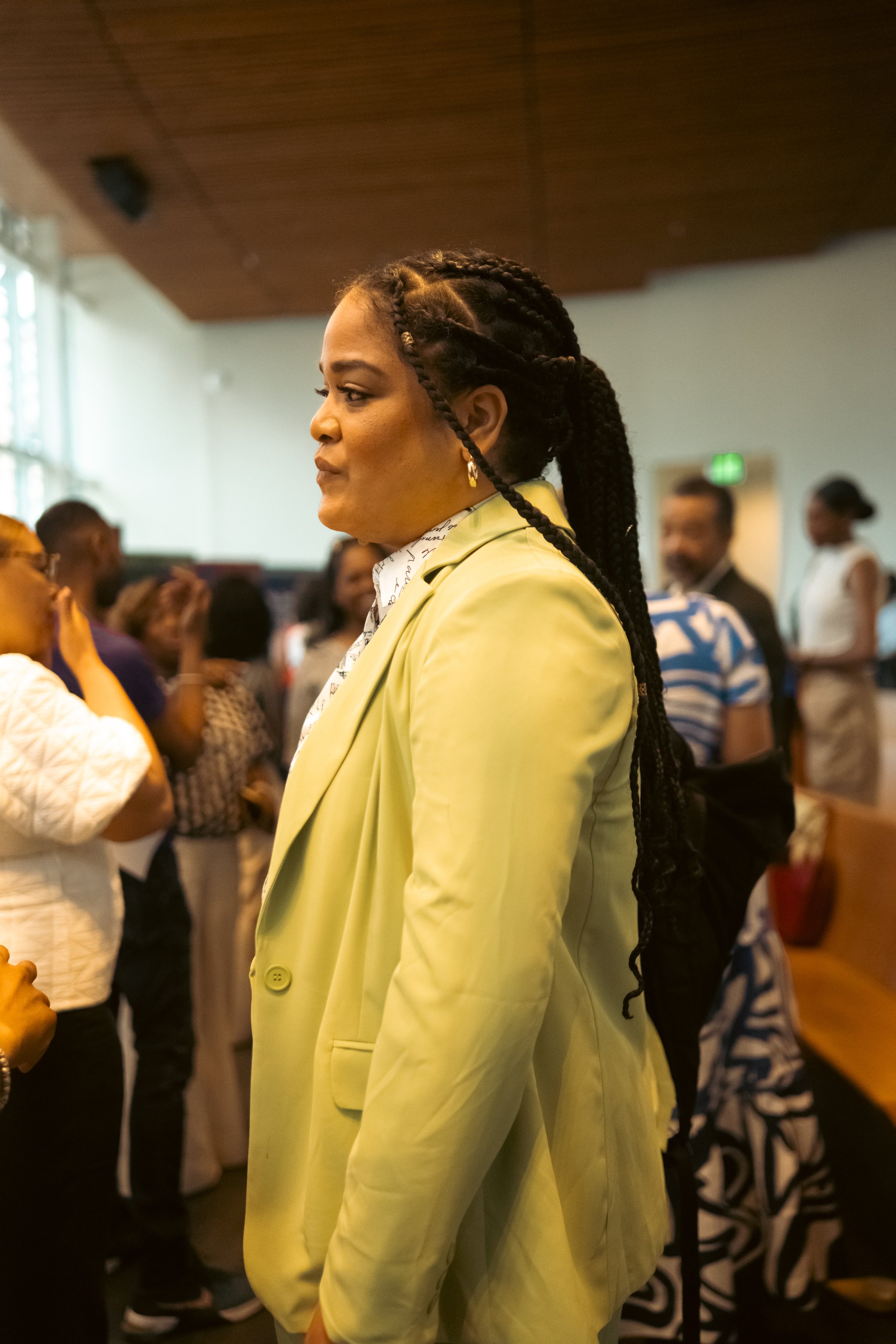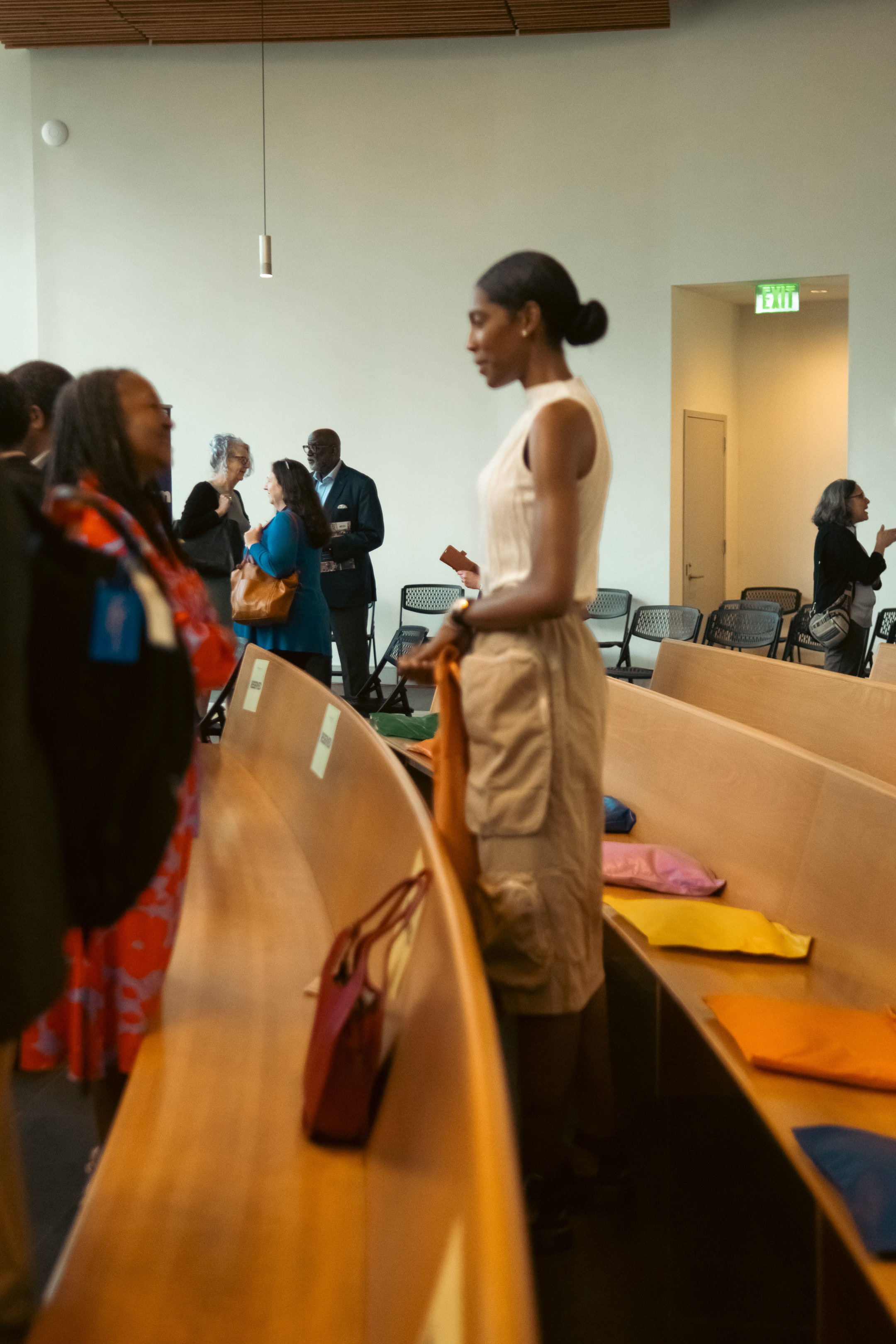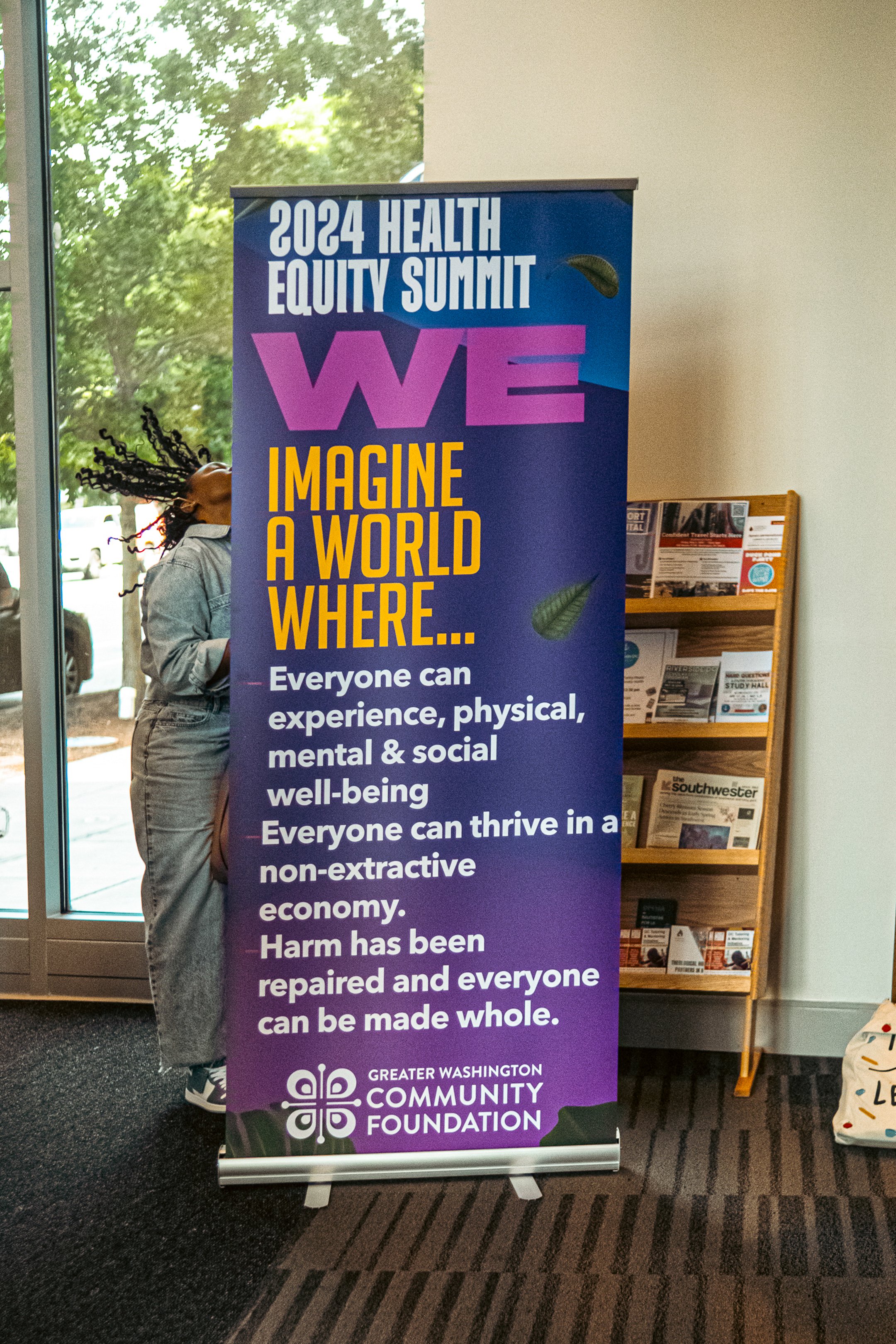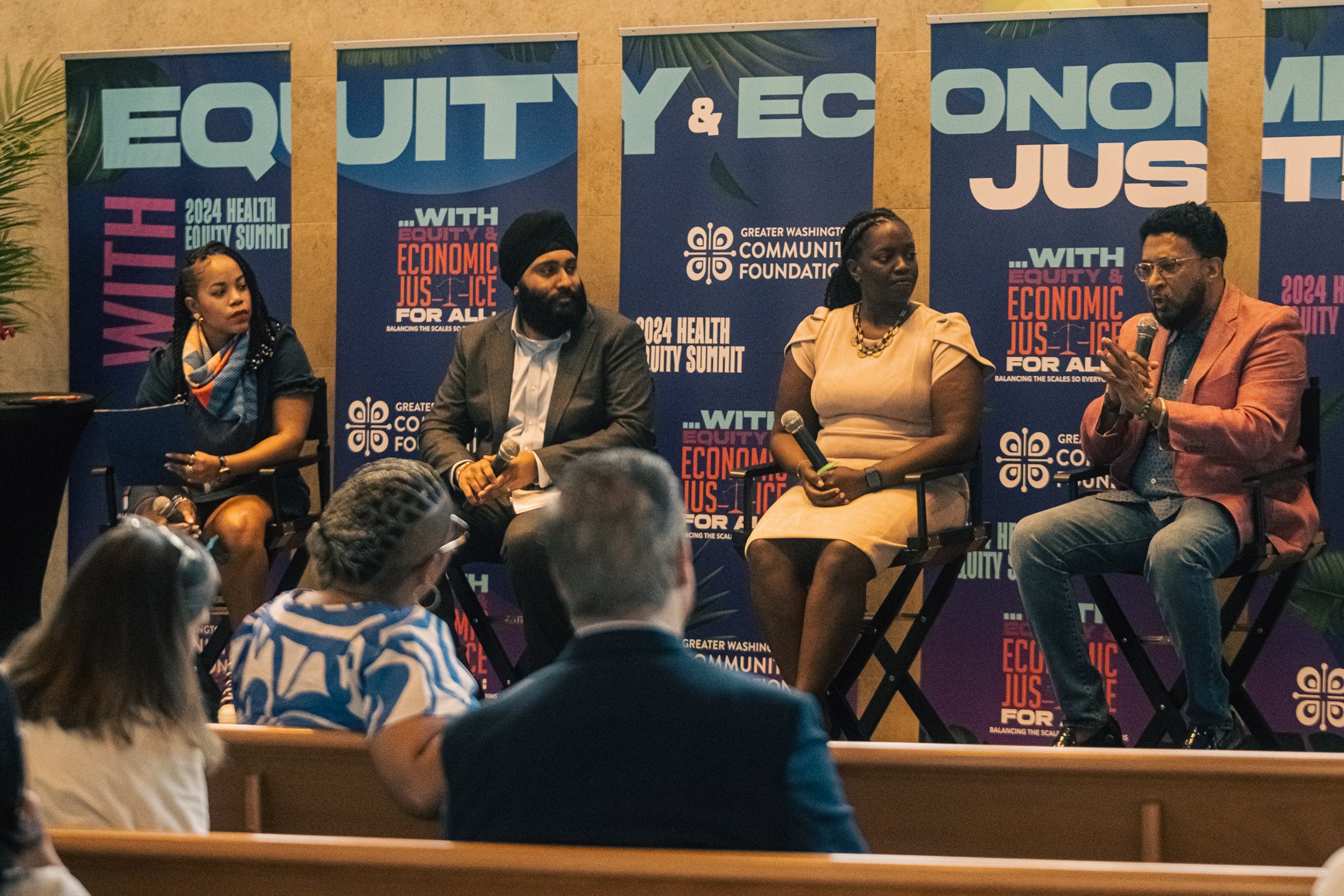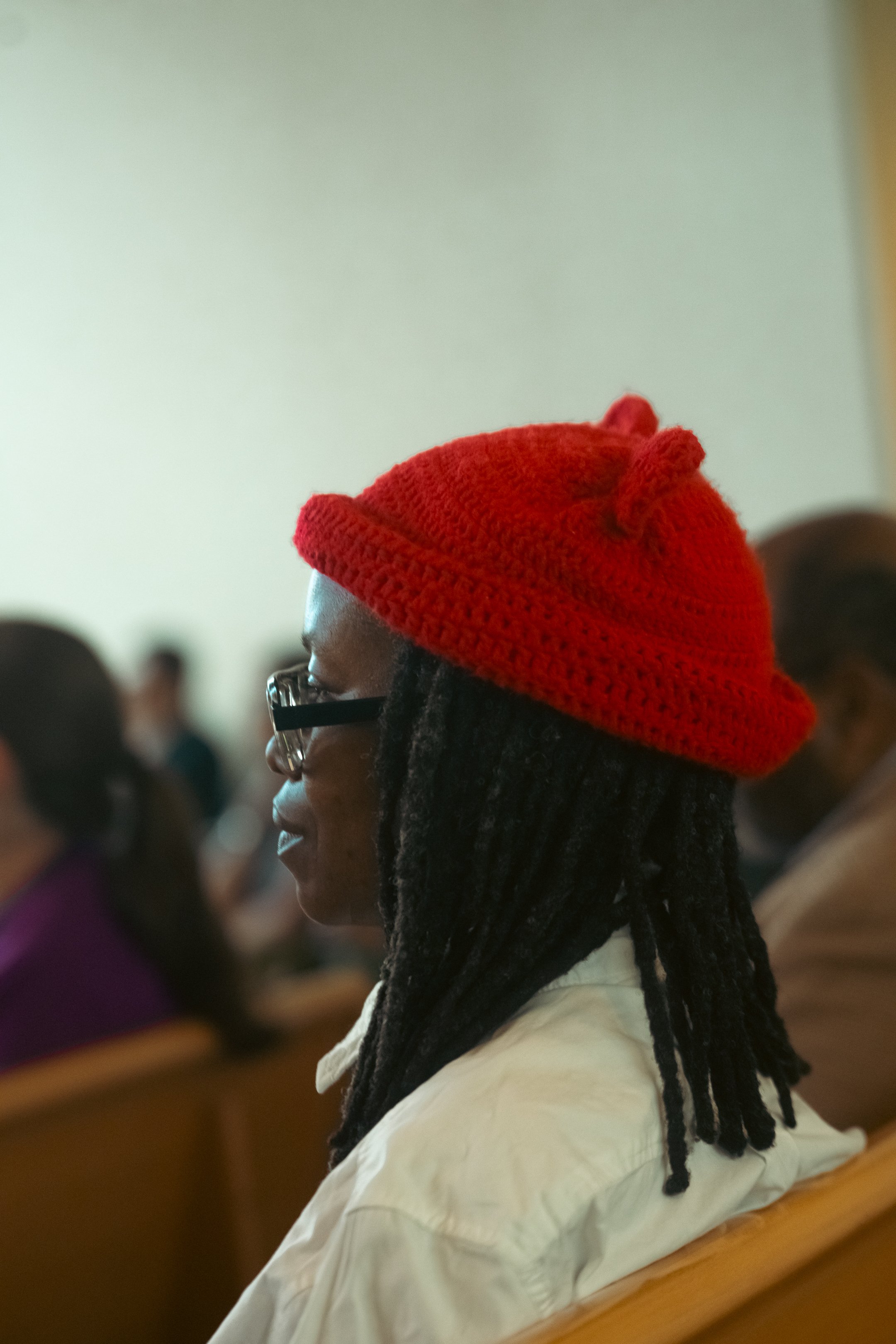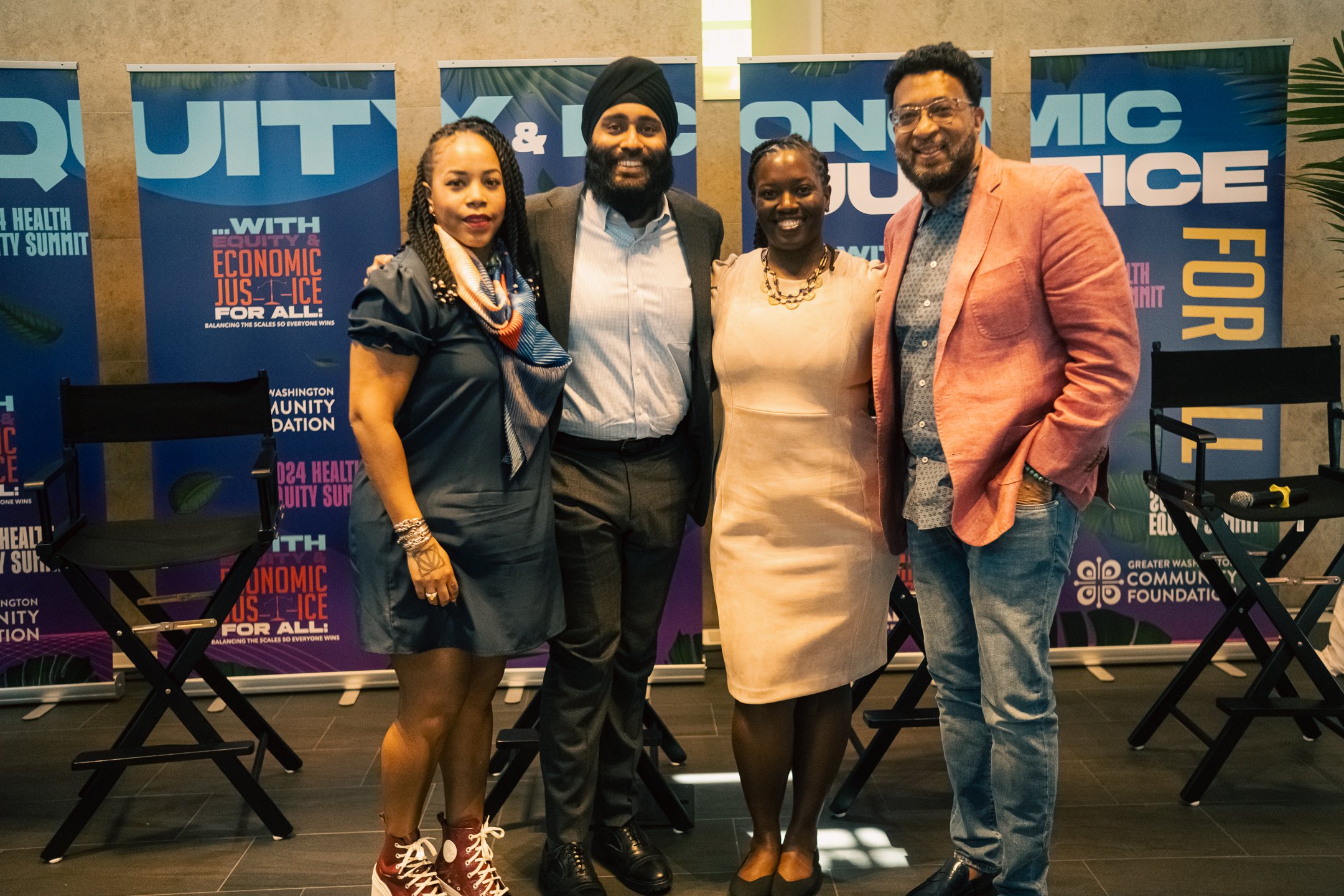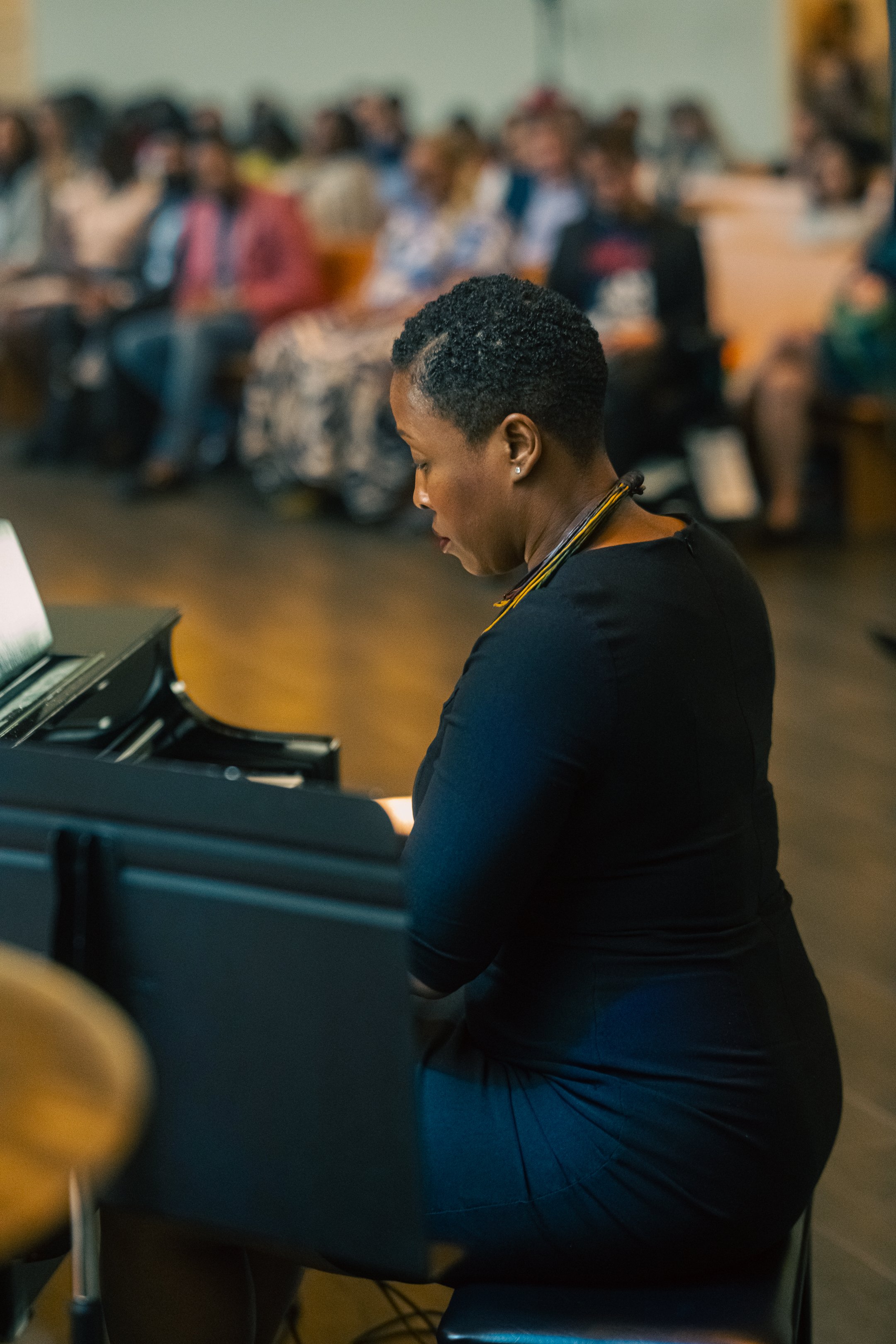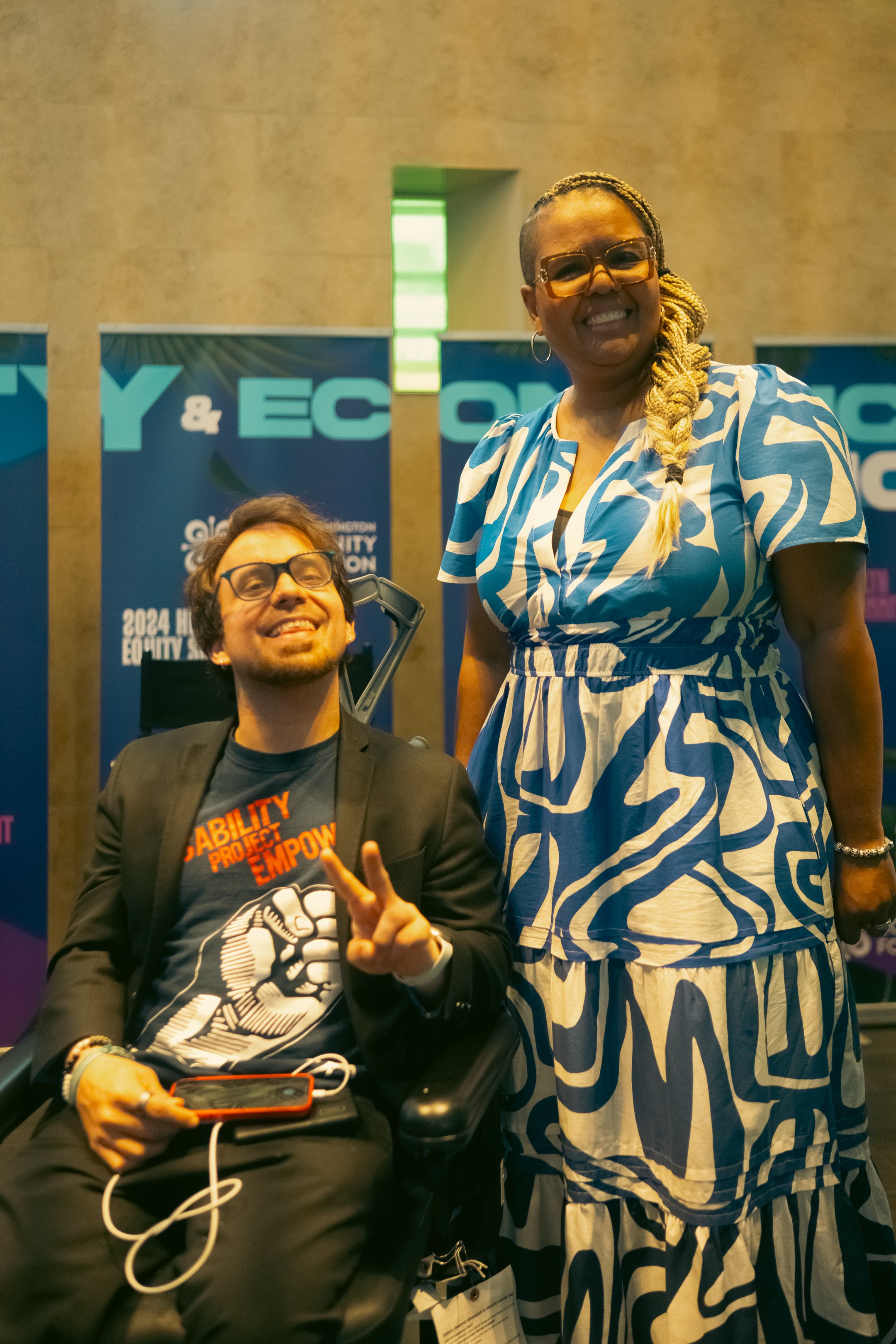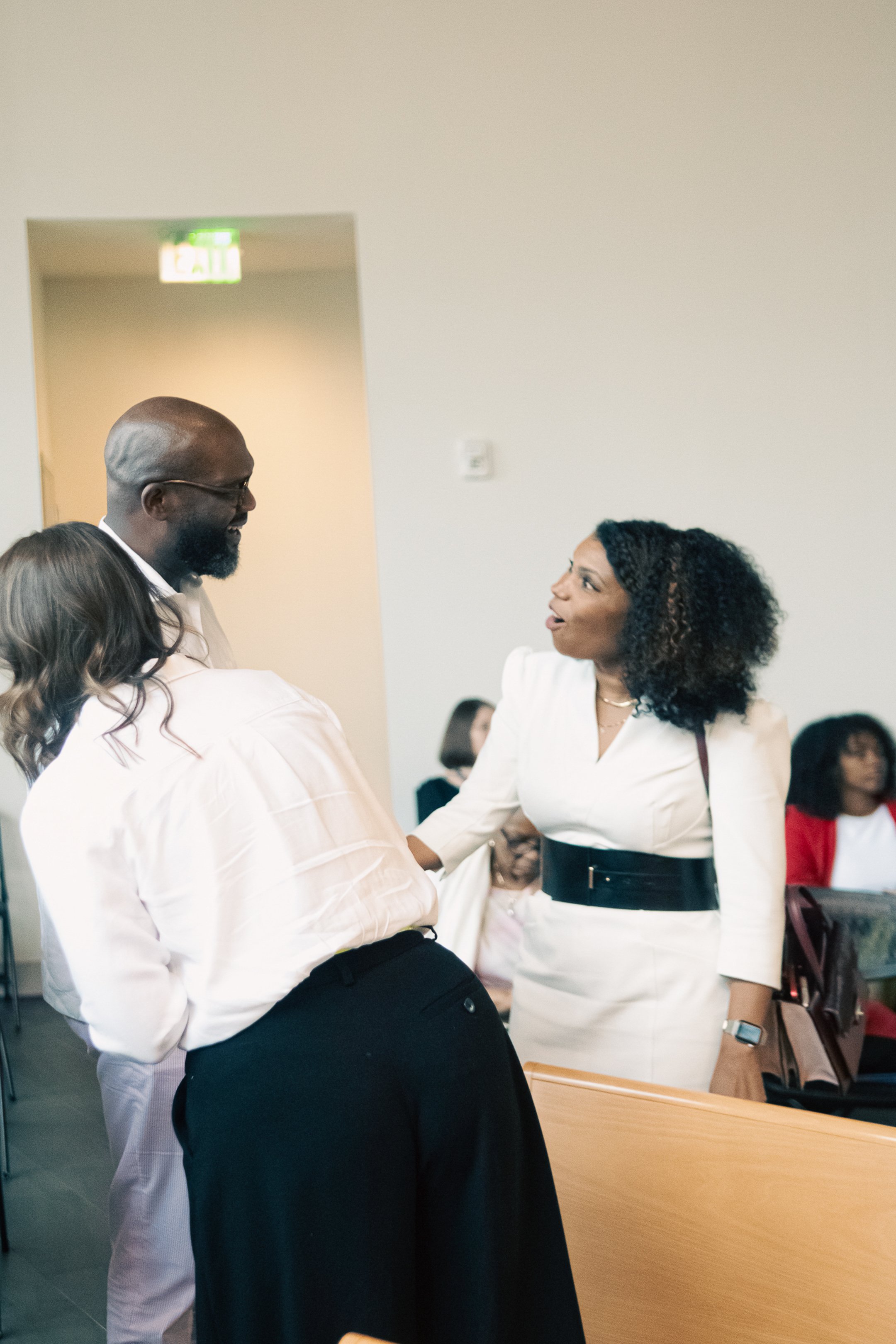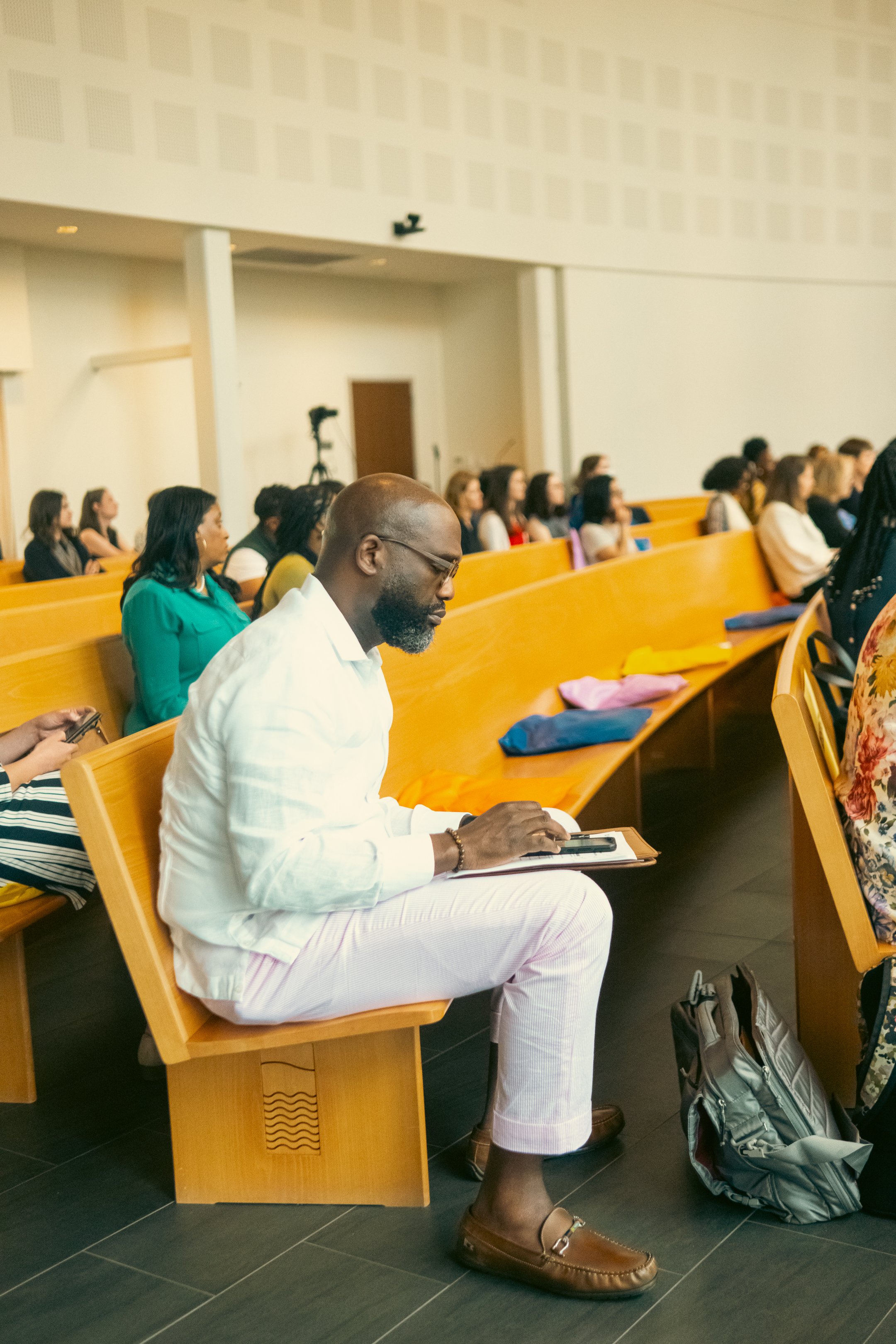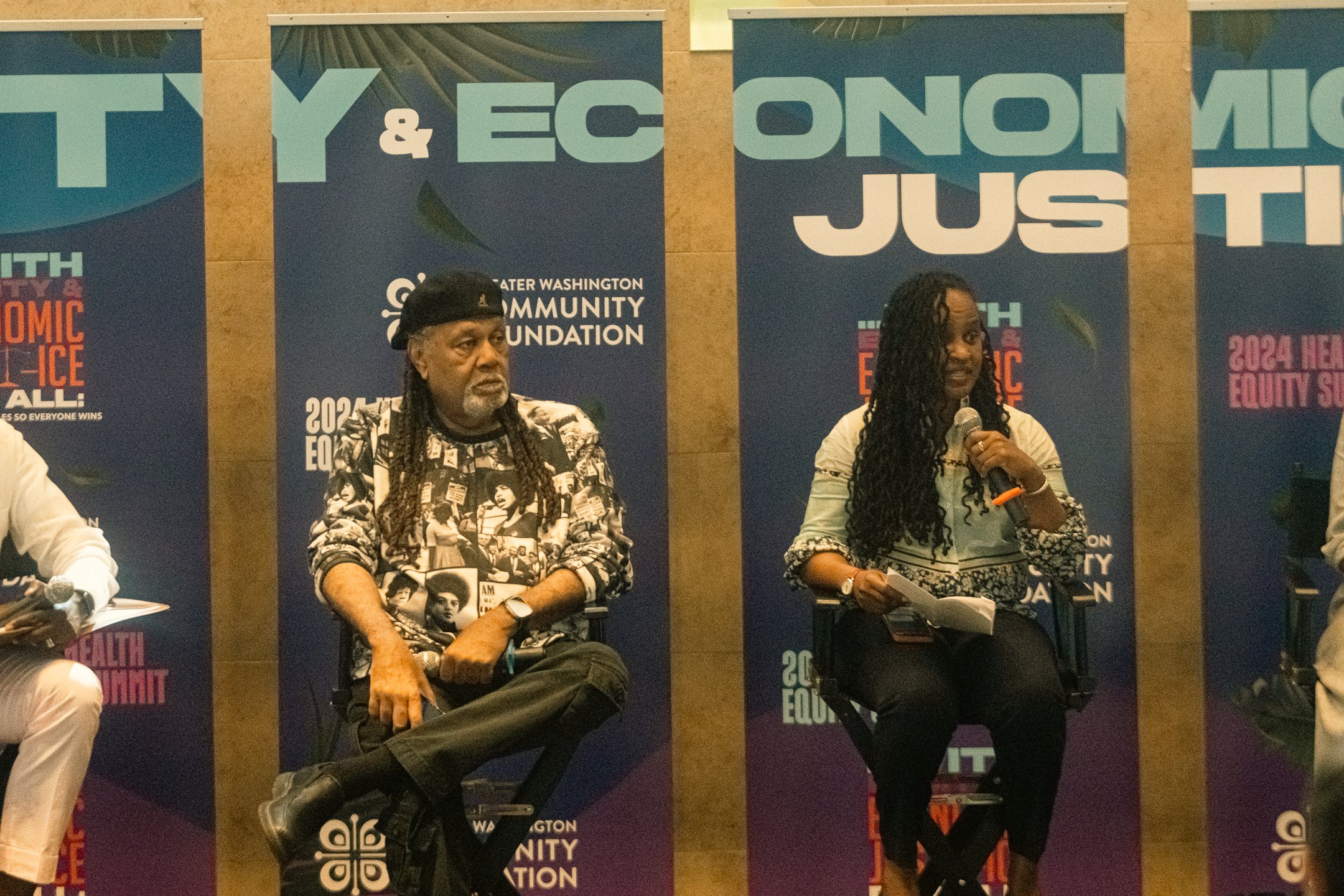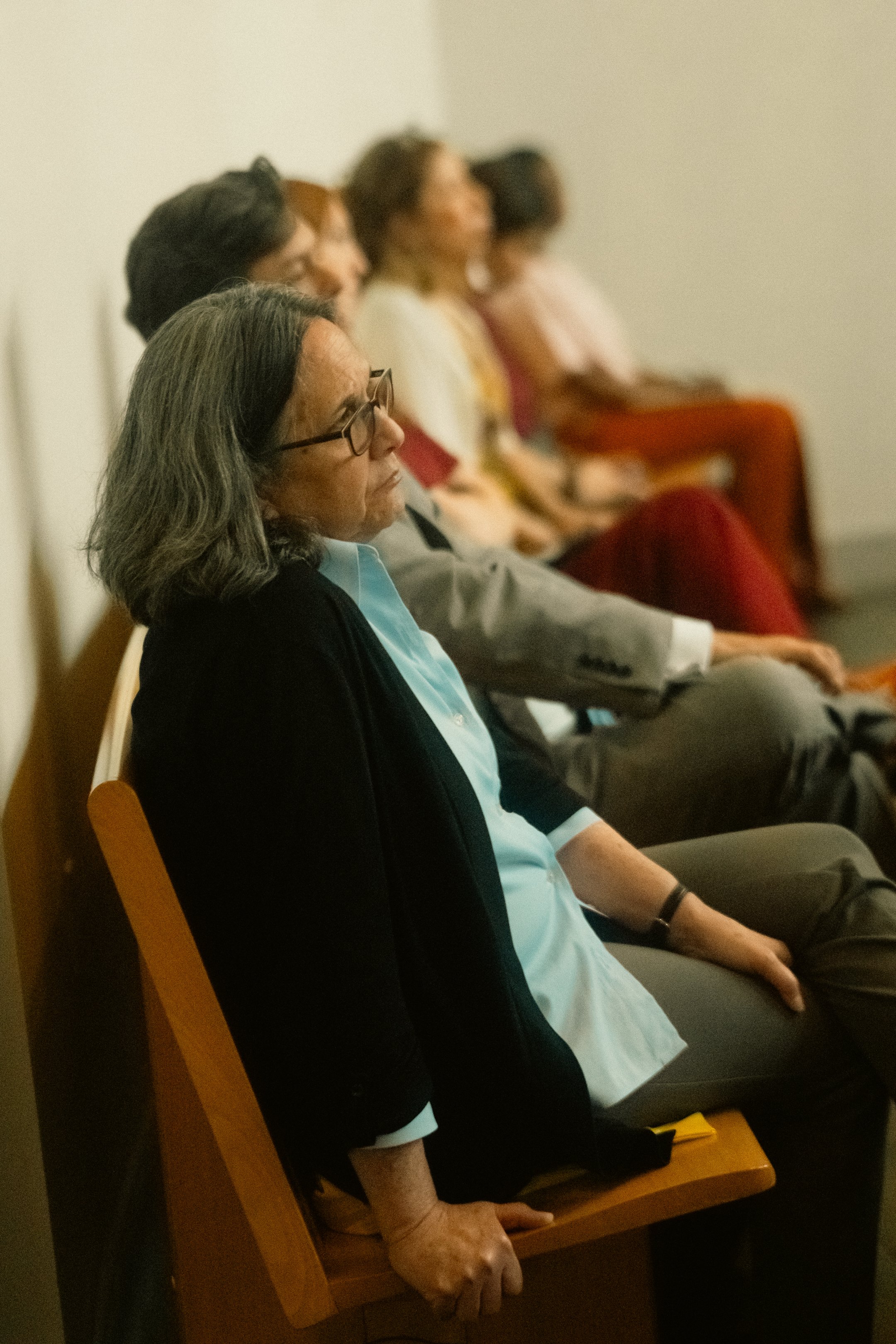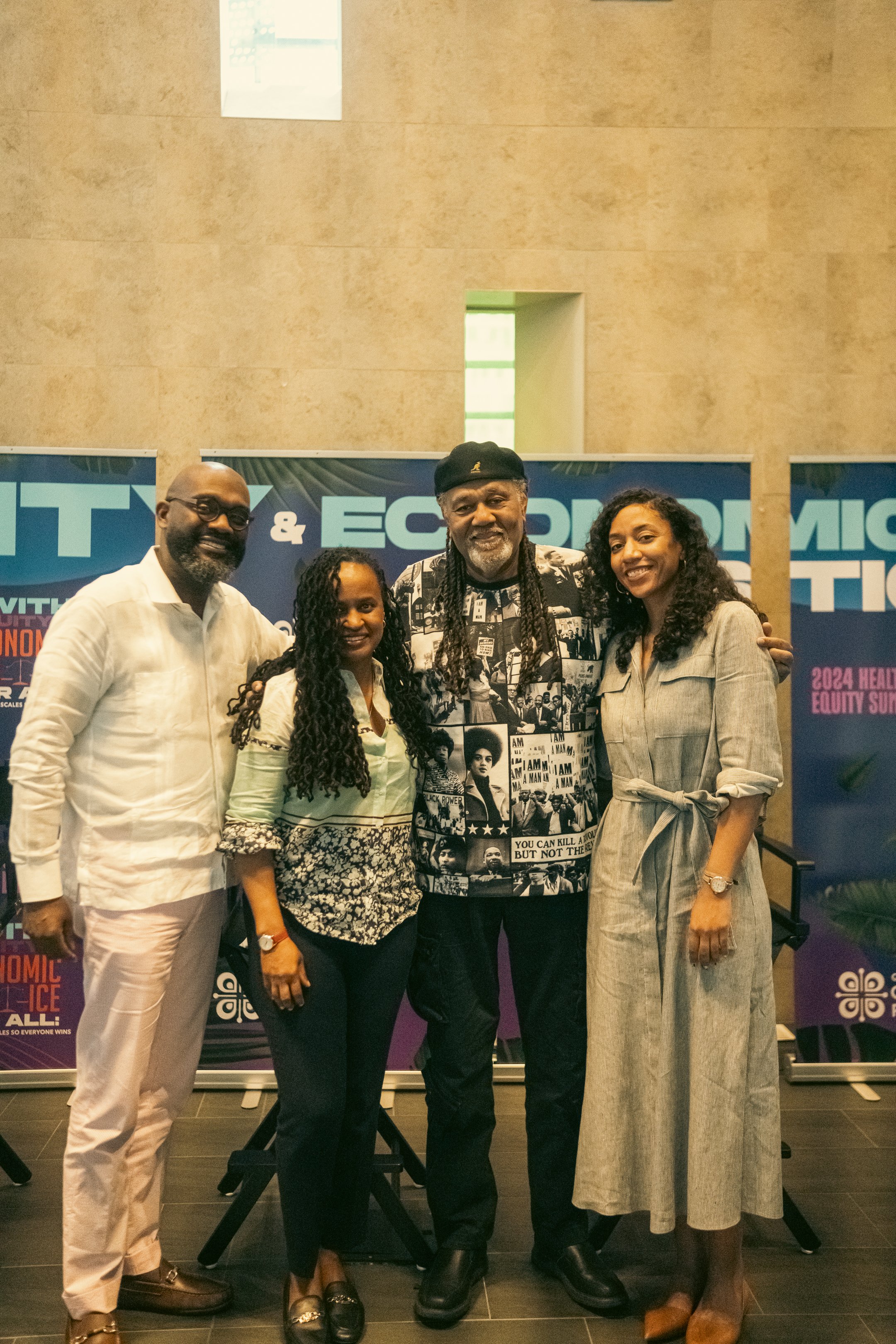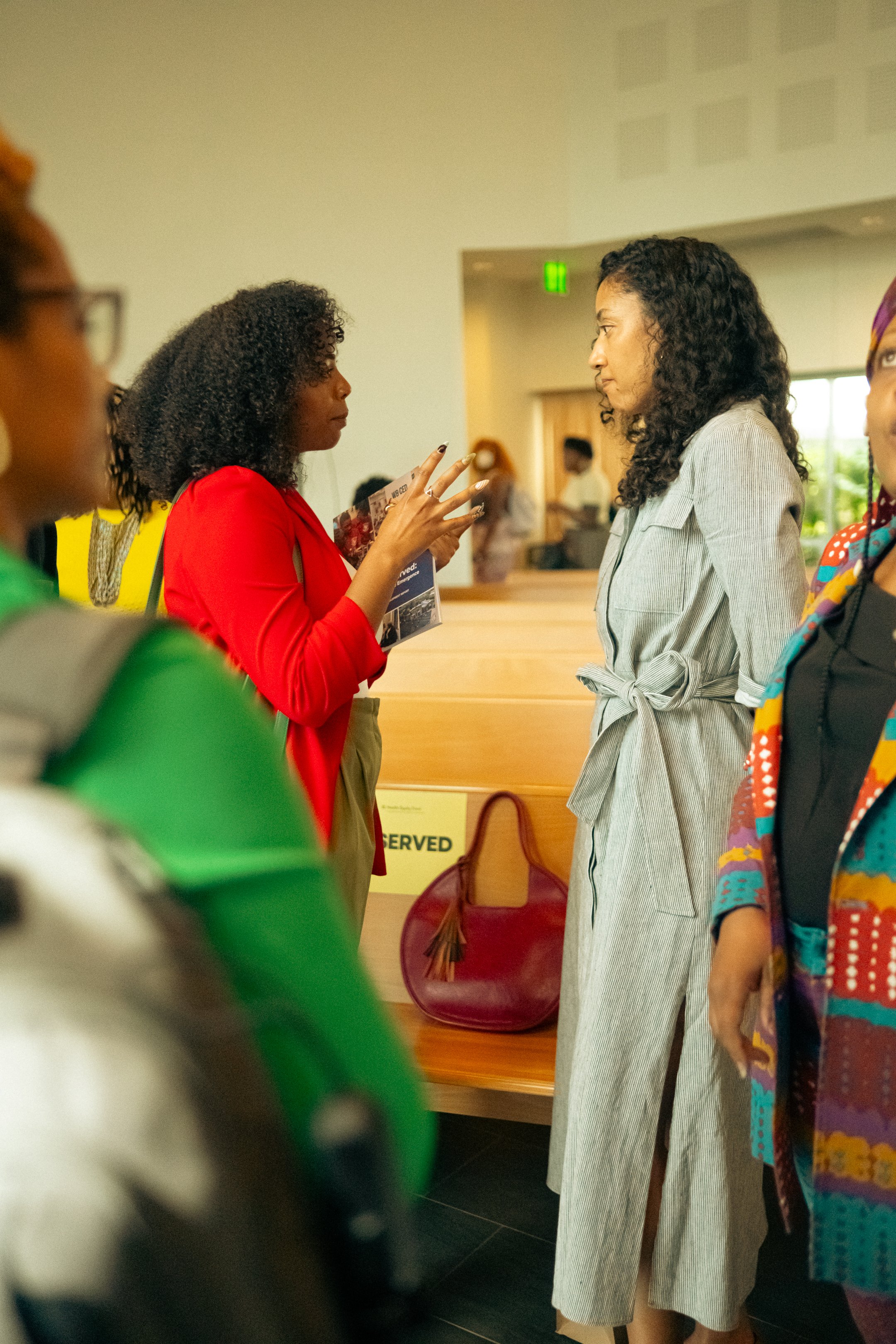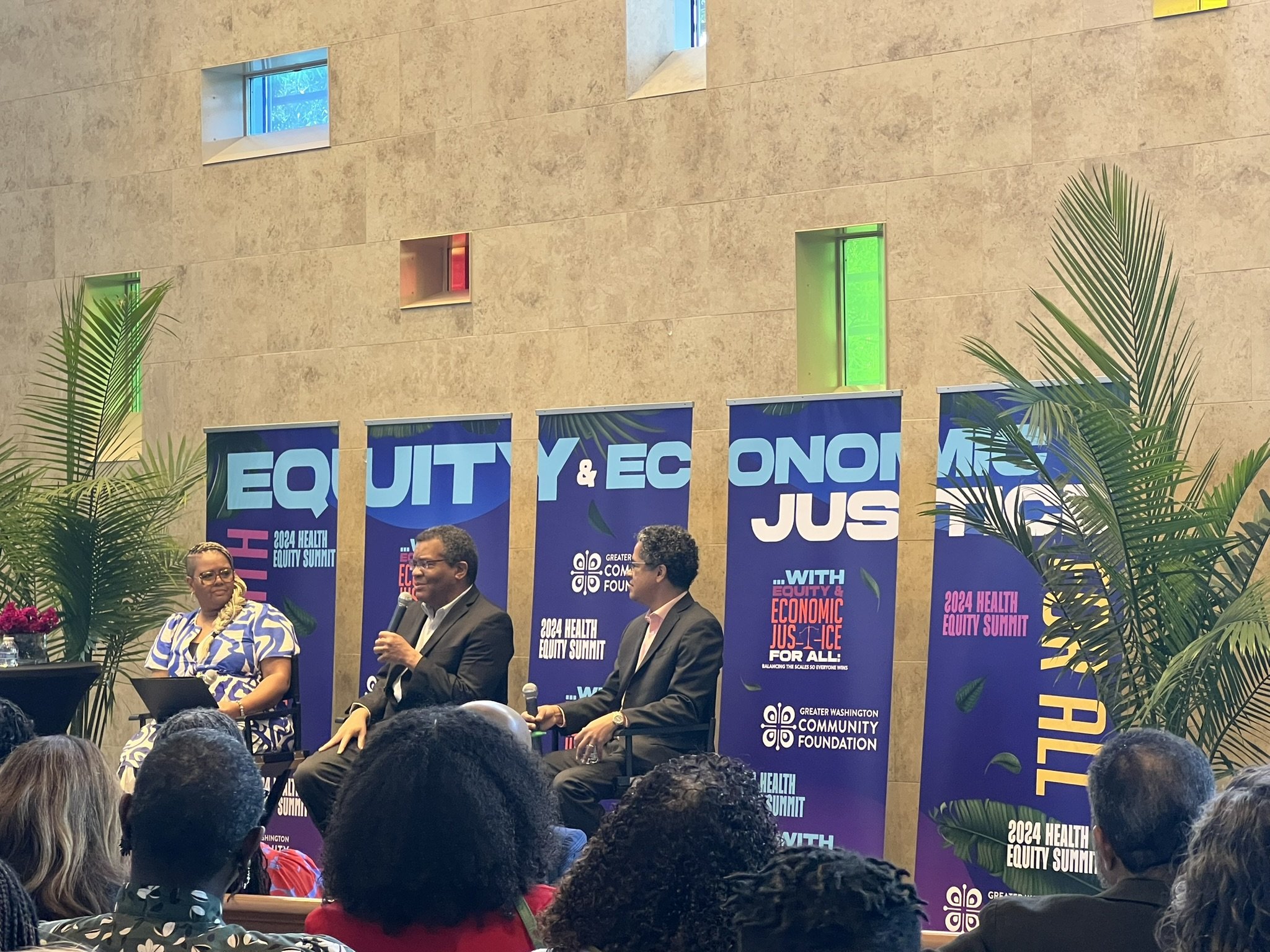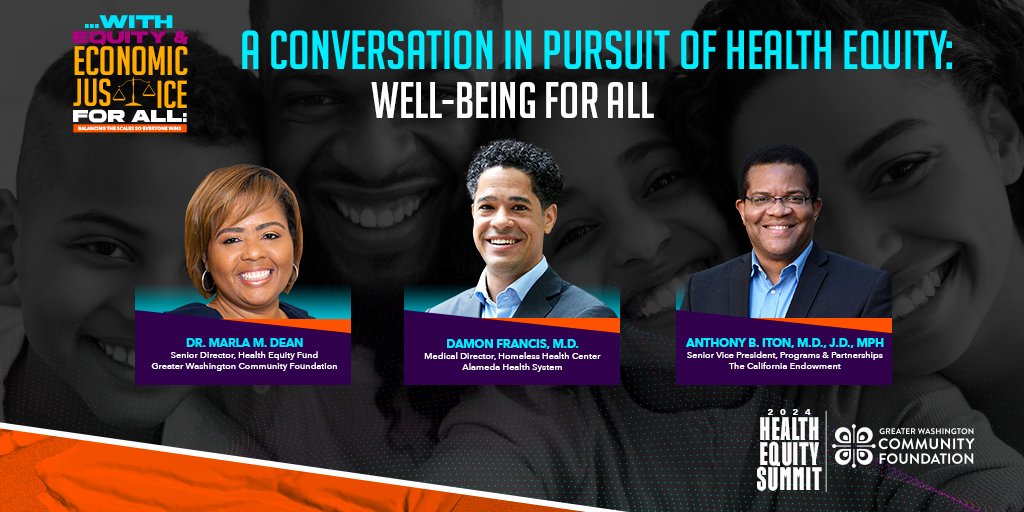In April 2024, The Community Foundation, with funding from the PNC Foundation, announced the Small Business Support Program - an initiative to support small businesses located along the Purple Line and Blue Line corridors.
In support of our Small Business Partners, The Community Foundation is excited to highlight the work and mission of these incredible organizations and the impact that they've had in empowering and uplifting their respective communities.
-
Tell us briefly about your business (where is it located, how long have you been in operation, what services do you provide)
MMC Consulting is headquartered in Mitchellville, MD, and has been fully operational since October 2019. We provide professional services in federal acquisition, program management, organizational change management, and staff augmentation. Our goal is to deliver tech-enabled solutions that enhance the efficiency and effectiveness of our clients.
In 2-3 sentences, please share with us the ways your business works with and contributes to your communityMMC Consulting actively engages with our community through partnerships with local organizations, providing training and career development opportunities. In March of 2024, we founded and launched a local chapter of the National Contract Management Association (NCMA) Metro Maryland Chapter. We further contribute to the community by offering resources and leadership to foster growth and development in the federal contracting community supporting small businesses by offering consulting services to help them navigate federal contracting processes and secure government contracts.
How has construction in the Blue/Purple Line Corridor Impacted your Business?
The construction in the Blue/Purple Line Corridor has provided MMC Consulting with new avenues and opportunities for collaboration with local businesses and community projects.
What excites you about receiving the Small Business Grant?
Receiving the Small Business Grant is exciting because it enables us to further our mission of empowering small businesses and delivering innovative solutions. It provides us with the resources to expand our services, invest in technology, and create more job opportunities within our community.
What are your dreams for the future of your business?
We want to become a leading provider in the federal acquisition sector and achieve annual revenues of $100 million by 2030. We will continue innovating and expanding our service offerings to meet the evolving needs of our clients and to continue contributing to our local community.
What are your dreams for the future of your community?
We envision a future where our community thrives with robust support for small businesses, equitable opportunities for all, and a strong network of partnerships that drive economic growth and development. We aim to contribute to a community where businesses and individuals are empowered to reach their full potential.
-
Tell us briefly about your business (where is it located, how long have you been in operation, what services do you provide)
We are located in Hyattsville, MD. We have been in business for 2 years as a meal prep delivery service. We provide catering, drop off service, meal prep, and cooking classes and travel to our clients to meet their needs.
In 2-3 sentences, please share with us the ways your business works with and contributes to your community
We cater to seniors who are unable to cook for themselves. We deliver food to them and also cater special holiday meals for them. We also have done free events for the homeless in Washington, DC. We also support college students through our half price Sunday brunch, for those who may not have somewhere to go for a nice Sunday meal.
How has construction in the Blue/Purple Line Corridor Impacted your Business?
The construction and road closures have caused a lot of traffic, making it harder to receive deliveries from our suppliers. It also makes it hard to get clients to come out to our location, which has impacted our business.
What excites you about receiving the Small Business Grant?
I’m excited about the chance to purchase better quality supplies and products for my business. It will also allow me to do the things I needed to get done far as advertising, and purchasing equipment and small wares for my kitchen.
What are your dreams for the future of your business?
To open multiple locations thought out PC County.
What are your dreams for the future of your community?
My dream for is to use my business and reputation in PG County to continue to teach others and help our community grow.
-
Tell us briefly about your business (where is it located, how long have you been in operation, what services do you provide)
We are based in Prince George's County and were formally established in April 2020. We help people without computer or corporate experience build careers in business and IT.
In 2-3 sentences, please share with us the ways your business works with and contributes to your community
We help citizens of Prince George's County qualify for better opportunities in the business and IT sector. We work with community colleges and other community organizations to deliver training programs that teach the career development process and strategy. Through our services, we are able to increase the pool of qualified candidates for local businesses.
How has construction in the Blue/Purple Line Corridor Impacted your Business?
Construction has limited the number people who can attend our in-person events on the campus of Prince George's Community College.
What excites you about receiving the Small Business Grant?
I’m excited about the marketing opportunities that allow my business to reach and impact more people.
What are your dreams for the future of your business?
To expand into prisons, half-way houses, and re-entry programs.
What are your dreams for the future of your community?
To see marginalized communities no longer shut out of the business/IT world due to a lack of education, knowledge, and resources.
-
Tell us briefly about your business (where is it located, how long have you been in operation, what services do you provide)
Based out of Bowie/Mitchellville, Cynthia Cephas Photography was established in 2016 to provide high volume, professional headshots on-location for corporate/organization executives, teams & groups. We specialize in Headshot Booth Activations for attendees at conferences, conventions, trade shows, sales meetings, job fairs & networking events. Cynthia Cephas is an Executive Headshot & Commercial Brand photographer & Corporate Event photographer. I serve as the photographer for the Maryland Black Chamber of Commerce (MBCC) Prince George's County Advisory Board & as the MBCC Photographer.
In 2-3 sentences, please share with us the ways your business works with and contributes to your community
In the past, we have provided headshots for small business owners at networking events and partnered with other small business owners. For the past 5 years, we’ve also provided affordable photos with a Black Santa at a local town center.
What excites you about receiving the Small Business Grant?
I am excited about receiving the Small Business Grant to provide resources to level up my business, to grow and to scale.
What are your dreams for the future of your business?
My dream is to be the go-to headshot photographer in Prince George's County, the state of Maryland, and the DMV.
What are your dreams for the future of your community?
To see the community continue to thrive and grow with small businesses being an integral part.
-
Tell us briefly about your business (where is it located, how long have you been in operation, what services do you provide)
Founded by Makalay Turay in 2004, Brighter Beginnings 4 Kids Inc. began as a small center located in Laurel, Maryland. The company recently acquired property and will soon be moving to a new location in District Heights, Maryland. The center is licensed by the Maryland State Department of Education (MSDE) as a childcare center for children 2 to 12 years of age and will have a capacity of 50 children.
Our mission is to create success, confidence, and a lifelong love of learning for young children. Our programs will provide full-time and part-time childcare services for Maryland families – in addition to before and after-school services for school age children. We utilize Creative Curriculum -- a research based pre-school curricula and assessment system that supports teaching through creativity and project-based learning. The center will operate from 6:30am to 6:00pm, Monday through Friday - with observance of all major holidays.
In 2-3 sentences, please share with us the ways your business works with and contributes to your community
The goal of Brighter Beginnings 4 Kids, Inc is to challenge achievement gaps in education; an issue that plagues our public school system and leads to generational poverty and lack of opportunity -- especially for students of color. Brighter Beginnings 4 Kids Inc. strives to create better opportunities for minority students by providing high-quality child-care programs. By doing this, the program helps to decrease the number of children below level in literacy and math entering the school system.
How has construction in the Blue/Purple Line Corridor Impacted your Business?
Brighter Beginnings 4 Kids Inc. has been hit hard due to the ongoing construction of the Blue/Purple Line Corridor project. The areas of construction have created congestion, leading to new traffic patterns in the surrounding area. People are cramped onto major routes; specifically, those within a 2–3-mile radius of the construction sites, creating congestion and traffic problems.
Our business is taking longer to generate revenue due to the loss of visibility from the new traffic patterns being created. The construction traffic causes parking issues and makes it difficult for people to see the business storefront from the main road. Accessibility to the childcare center has become harder due to the traffic from the main road, especially during busy times of the day.
What excites you about receiving the Small Business Grant?
With the help of the Small Business Grant, Brighter Beginnings 4 Kids is creating a blueprint for high quality affordable childcare for working class Maryland families. Thanks to our new location, Brighter Beginnings 4 Kids will be able to provide 50 new daycare slots.
Maryland families are in dire need of affordable high-quality daycare programs. Many childcare centers were forced to shut down due to the global COVID-19 pandemic. Brighter Beginnings 4 Kids Inc. nearly shut down after multiple years of lost revenue from the global COVID-19 pandemic.
The new program in District Heights, Maryland will help to provide much needed daycare services. The financial support provided by this grant will give us the necessary tools to keep staff employed, utilities and rent paid, and undergo much-needed renovations to expand the program into the new location.
Not only that, but this grant will help to build and sustain a vibrant community in the Prince George's County, District Heights area, by allowing us to offer products and services which are vitally important and necessary for working families and growing communities in Prince George’s County, Maryland.
What are your dreams for the future of your business?
Brighter Beginnings 4 Kids Inc. believes that the first years of a child’s life are critical to the development of positive self-esteem, confidence, happiness, independence, and creativity. We are here to establish, build, and maintain long lasting partnerships with parents of the children enrolled in the center and families in the surrounding communities.
Systemic and progressive achievement is best acquired by implementing early learning programs that provide students with the requisite tools and skills needed to become successful competent adults in society. The dreams for the future of the business will be to continue the legacy of uplifting Maryland's young learners, knowing that all children can succeed.
What are your dreams for the future of your community?
Brighter Beginnings 4 Kids Inc. is committed to supporting and providing before and after school care for Title 1 Schools and schools with high FARMS Rates (40% or higher) located in the District Heights area. Students in the program will improve scores and have a renewed and deeper confidence in their academic abilities. We are committed to helping Maryland children and youth excel in pre-school, elementary school and beyond.
Through this grant, we are expanding access to high quality early childhood education which will generate a significant future return on investment for our society and for children and families across the state of Maryland.
-
Tell us briefly about your business (where is it located, how long have you been in operation, what services do you provide)
Our venture, Flavors®, is centered around our maker and artisan workspace, the Culinary Hub®, which launched in 2021, a 3,000 square foot cutting-edge facility located in Hyattsville, MD.
Flavors Culinary Hub acts as a crucial resource for culinary professionals, offering them a platform to start, develop, and scale their food and beverage businesses within a certified commercial kitchen facility. We also serve corporate and government clients who come to us to spearhead hospitality training, including food, beverage, safety, and customer service, as well as concept management within their commercial spaces, venues, and their public and private events.
In 2-3 sentences, please share with us the ways your business works with and contributes to your community
Flavors® is a catalyst for culinary growth in our community, offering under-resourced food entrepreneurs access to state-of-the-art commercial kitchens, health department licensing, and specialized training programs. Our unique membership model removes the financial barriers to launching and scaling a business, fostering a vibrant ecosystem that benefits local professionals, corporate clients, and government agencies alike.
How has construction in the Blue/Purple Line Corridor Impacted your Business?
The Purple Line construction has created challenges such as reduced foot traffic, business closures, and decreased accessibility, all of which have impacted our food and beverage members' ability to connect with potential customers.
To counteract this, we’re investing in new programming at our facility, including a business café offering breakfast, lunch, dessert, and mocktail beverages, promoting responsible socialization without alcohol. We're also launching a private dining club that will not only host various events for the community to learn about our offerings and local culinary artisans but also provide our artisans with a dedicated space to host their private events. These initiatives are designed to foster community engagement and support local talent despite the construction disruptions.
What excites you about receiving the Small Business Grant?
We are thrilled about receiving the Small Business Grant because it will provide essential support for managing the upcoming increase in our commercial kitchen facility's rent. This grant will allow us to effectively allocate funds towards our rent expenses, ensuring we can maintain our operations and continue supporting our culinary community. It’s an exciting opportunity to strengthen our financial stability and invest in the growth and development of our programs and services.
What are your dreams for the future of your business?
My dreams for the future of Flavors® involve expanding our culinary hubs nationally and internationally to fill gaps in business and leadership training often overlooked by traditional culinary schools. These facilities will include small to mid-size manufacturing capabilities, logistics management, local procurement initiatives with farmers and growers, and centralized retail spaces where local food, beverage, and agricultural artisans can sell directly to their communities.
Strategically located in suburban regions, where major cities may be saturated or inconveniently distant, our hubs will provide accessible, safe, and diverse spaces for engaging with the local community. This expansion aims to support culinary professionals, enhance Business-to-Government (B2G) and Business-to-Business (B2B) opportunities, foster community connections, and offer showcasing opportunities in areas that are underserved and often overlooked, with fewer barriers to entry.
What are your dreams for the future of your community?
My dreams for the future of our community center around creating a vibrant, inclusive hub where culinary innovation thrives and where local food and beverage entrepreneurs have the resources and support to succeed. I envision a space that not only fosters diverse, scalable brands with regional, national, and international potential but also provides a dedicated learning environment specifically tailored to adult professionals. This space would offer affordable, high-quality education focused on business and leadership skills for those who are heads of households and balancing family responsibilities. It would include amenities similar to those found in traditional colleges but designed for adult learners who can't commit to full-time, on-campus programs.
By addressing the gap of being underfunded but over-mentored, we aim to drive economic growth, create lasting legacy brands, and enhance the quality of life for those that have chosen the hospitality sector to be of service.
-
Tell us briefly about your business (where is it located, how long have you been in operation, what services do you provide)
Founded in 2019, TANTV is a news media publishing and technology company based in Maryland dedicated to serving the underserved African and Black multicultural diaspora communities in the DMV area. Our mission is to elevate the inclusion of these communities in American society by providing informative, inspiring, and educational content that reflects their daily lives.
Recognizing the rich cultural heritage and the growing importance of the African diaspora in various sectors such as culture, politics, and entrepreneurship, TANTV was created to offer a platform where Africa and its descendants can interact, engage, and stay informed. We identified a significant gap in the representation and coverage of these communities in U.S. media, particularly in accessing local information that empowers them economically. Our focus is on addressing this gap, supporting the diverse cultures within the Black experience, and ensuring that our community is heard and represented.
In 2-3 sentences, please share with us the ways your business works with and contributes to your community
TANTV serves a multi-generational audience, including first-generation immigrants, African-Americans, and allies of African culture, by filling the media void that reflects their lived experiences. We chronicle and document stories that impact our audience through journalism, storytelling, and commentary on current events, local news, business, politics, lifestyle, entertainment, and technology. Our local newsrooms produce high-quality, equitable journalism and need-to-know information that directly addresses community needs, such as affordable housing, applying for benefits, and voting. We collaborate with organizations across tech, media, entertainment, consumer goods, and the nonprofit sector to enhance connections with the diaspora community, equipping people with skills and resources, and fostering critical public conversations.
How has construction in the Blue/Purple Line Corridor Impacted your Business?
The construction in the Blue/Purple Line Corridor has led to a decline in income, particularly from reduced advertising revenues from businesses in the corridor. We’ve faced challenges in accessing local clients and businesses, especially as some have shut down or become difficult to reach, making it harder to connect with underserved communities most affected by the construction.
What excites you about receiving the Small Business Grant?
This grant empowers us to continue shining a light on our local community and businesses, addressing the persistent underrepresentation of Black communities in mainstream media while promoting authentic, community-driven journalism. It strengthens our mission of elevating the inclusion of underserved communities through impactful local journalism, sharing resources and information they might not otherwise have access to. It also enables TANTV to engage in workforce development partnerships and build a sustainable future for local journalism that reflects underserved communities.
What are your dreams for the future of your business?
At TANTV, we have long advocated for the inclusion of multicultural audiences in American mainstream media. The Greater Washington Center Foundation recognizes the importance of representation and supports our mission of connecting multicultural companies with funding.
Our vision is to create a media and television network dedicated to serving these underserved communities, ensuring they see themselves represented in media. We aim to expand the reach and sustainability of media outlets serving communities of color through partnerships and support from foundations and donors alike.
What are your dreams for the future of your community?
Our dream is for our community to have a seat at the table in matters of policy, economy, and beyond. We strive to advance inclusion and social justice for the underserved and underrepresented Black diaspora, particularly African migrant and immigrant communities.
Our goal is to close longstanding inequalities, strengthen the broader African immigrant diaspora, and prioritize community listening and engagement to produce news and content that directly addresses their needs.
-
Tell us briefly about your business (where is it located, how long have you been in operation, what services do you provide)
Sidnae Global Research (SGR), located in Upper Marlboro/Springdale, Maryland, champions healthier communities by securing strategic funding and enabling impactful collaborations. We guide U.S. health centers in obtaining corporate, foundation, and government grants, with a focus on federal agencies like SAMHSA, CDC, Department of Justice, HRSA, and ACF. Since 2017, our expertise has helped nonprofits raise over $13 million and secure more than 80 awards, enhancing their community impact.
In 2-3 sentences, please share with us the ways your business works with and contributes to your community
SGR is committed to serving the community in Prince George's County, Maryland. To assist nonprofits in enhancing their grant-writing skills, we offer grant-writing training, nearly 100 learning resources on our website, and free training sessions at local libraries. Furthermore, we collaborate with local churches and business organizations to provide support to small businesses and the community.
How has construction in the Blue/Purple Line Corridor Impacted your Business?
Due to being a primarily remote business, Purple Line Construction has had somewhat limited impacts on our company. However, it has affected our ability to travel to community spaces and visit with clients quickly. We also have had to carefully consider where we can host events so that they are accessible to customers.
What excites you about receiving the Small Business Grant?
We are excited to announce that we will be using the Small Business grant funds to hire a Grant Team Leader and expand our team's leadership. The grant funds will help us grow our company, make a positive impact on more communities, and provide deeper mentorship, support, and communication to our dedicated team of healthcare writers. We are looking forward to hiring locally and to increasing our presence in the community through county events. We are also eager to take advantage of the business support offered to the grantees and to foster community connections.
What are your dreams for the future of your business?
We aspire to grow into a seven-figure organization renowned as the top 'Grant Writers for Health Centers.' We aim to establish our company as a leader in securing funding for important public health community projects within the County and beyond. As an employer, we are committed to providing a welcoming space where all are valued and can make meaningful contributions, fostering an inclusive and supportive environment.
What are your dreams for the future of your community?
As lifelong residents of Prince George's County, we want our county to be the ideal place for everyone to live and aspire to. Our vision includes better air quality, more green spaces, and access to top-notch healthcare, shopping, and education within our community. We dream of Prince George's County becoming a hub for businesses, work, and leisure activities. Securing grants to fund these initiatives is our small way of working towards making these dreams come true.
-
Tell us briefly about your business (where is it located, how long have you been in operation, what services do you provide)
WEFIX, LLC provides repair services for phones and computers. We also provide tech support to those who need it – providing quality service, guaranteed. We are located at 1401 University Blvd, Suite G27, Hyattsville MD 20783
In 2-3 sentences, please share with us the ways your business works with and contributes to your community
We offer tech support, repair telephones and computers, and help people to get the most out of their technology.
How has construction in the Blue/Purple Line Corridor Impacted your Business?
The construction has caused us to lose a lot of our clients. We have lost more than 50% of our clients due to backups and the constant traffic caused by road closures. Many clients decided to leave us and look for other places that were more accessible to get the services they need.
What excites you about receiving the Small Business Grant?
This is such a huge help, that we feel so grateful for. This will help us lessen the impact of our losses so we can continue our operations. We look forward to using these funds to settle with our creditors, as well as getting access to more merchandise, machines, and material to continue to grow and create more job opportunities for the community.
What are your dreams for the future of your business?
My dream is to expand and create more job opportunities. We have been trying to do so for several years, but had to make cuts because of the economic downturn. This grant gives us the faith that we continue to expand and help our community by providing more jobs.
What are your dreams for the future of your community?
My dream is to help my community; that as my business grows, I’ll have more opportunities to create new jobs for my neighbors and support my local economy.



























